
Rick310
-
Posts
397 -
Joined
-
Last visited
Content Type
Profiles
Forums
Gallery
Events
Posts posted by Rick310
-
-
WOW Rob. Incredible!!! Really like the furled sails!!
-
Thanks again ClipperFan for your kind words. I think that if I continued to remake the arch, I might be able to come up with something better but I didn’t want to get bogged down and it probably wouldn’t be that much better.
-
Looks really nice!! Looking forward to starting the POB version when I get the solid hull version done.
-
Rob,
the scale of the Flying Cloud model is 1:48, or a 1/4 inches =1 foot
-
Before I moved on to the channels,chain plates and deadeyes, I attempted to come up with a solution to making the stern carving. This, of course was to avoid attempting to making the chain plates and straps for the deadeyes which terrified me. The stern board was described by McLean as a beautiful arch but no other details. The Buttersworth’s painting shows a small portion of the end of the arch but all else is speculation. I originally thought I would attempt to bend very small strips of wood but my utter failure in producing those strips was discouraging to say the least. I had no success with a draw plate reducing the strips to approximately 1/32 diameter, which I thought was the maximum size I could use without it being too bulky. There must be a secret to using a draw plate that I just haven’t found. That, combined with the trouble I had bending wood strips made me think that this was going to be very difficult and not practical.
I considered having a decal made, but that would look flat and besides, what design? I would probably try to duplicate what is shown on the plans and I decided to go that route as a last resort.
About that time, while reading KeithAug’s amazing blog on the schooner Germania, he described using brass wire to model some ship’s carving at the bow of the model, which was beautifully done (as everything else on the model).
I decided to try this using 24 and 28 ga. Brass wire. I made no attempt to duplicate the plans, aiming to produce a stern arch that looked decorative.
After several attempts , this is what I came up with. I intend to use decals for the name and port.
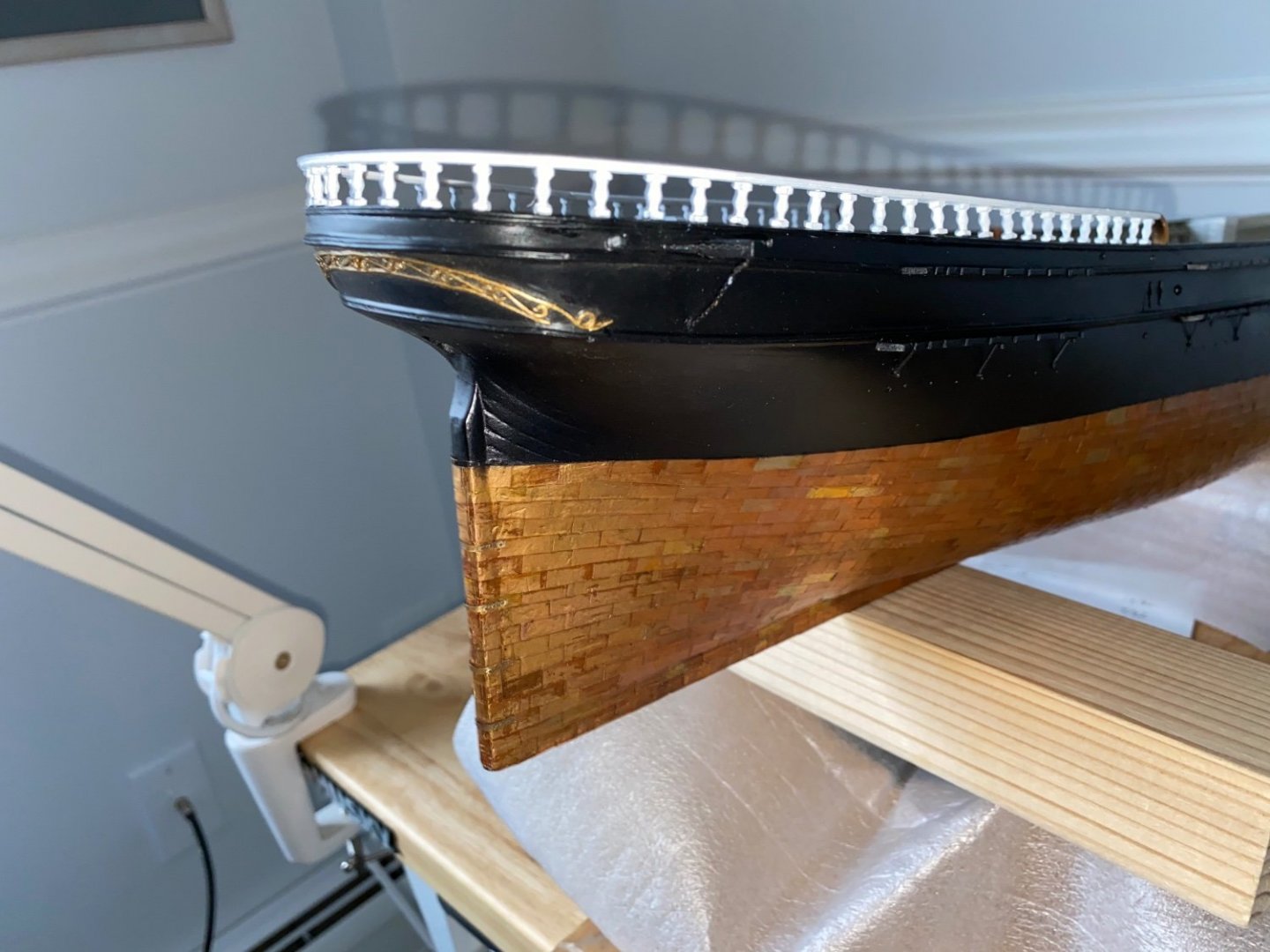
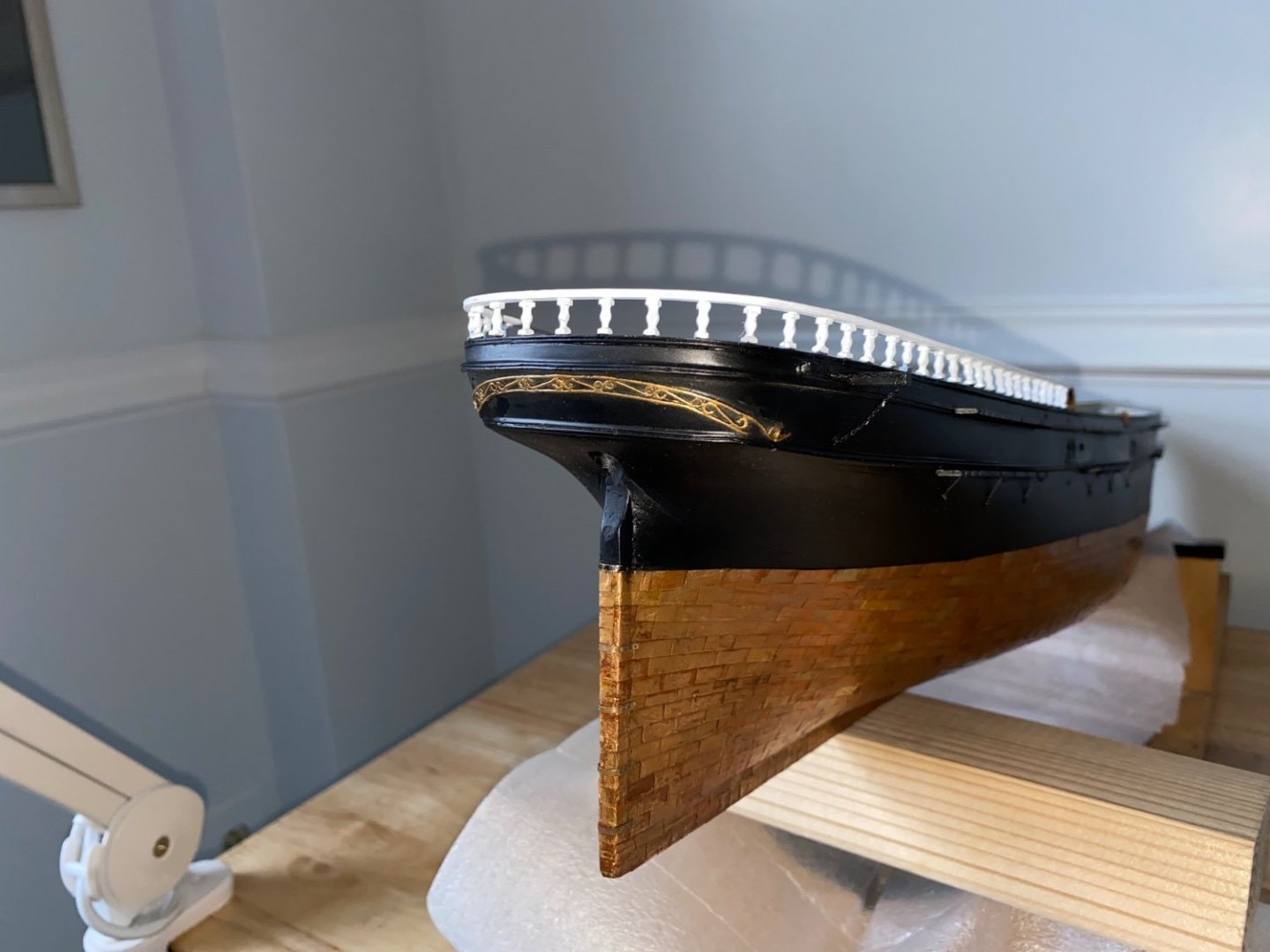
- chris watton and Cirdan
-
 1
1
-
 1
1
-
Rob, ClipperFan.
What a beautiful painting of Glory by Samuel Walters. Walters, as you may well know, was considered the pre-eminent Liverpool artist back in the 1800’s.
I have additional pictures of the Flying Cloud at the Boston Museum of art which clearly shows the belaying pins for the mizzenmast in the taffrail rail. I just can’t discern accurately the spacing in way of the shrouds. These pictures are available on line plus I took my own photos.
I believe that this model was donated to the museum in 1929 and was built by H E Boucher in 1915, who I think was a professional model maker. It was overseen by Capt. Arthur H. Clark, who captained clipper ships and wrote the book The Clipper Ship Era with nice things to say about the FF.
One interesting detail of this model is that the inside edge of the plank sheer has a double bead molding, as does the outside edge. This is also seen in photos of the Benjamin. Packard. I choose to model this molding, although it is not supported by the plans or Carothers American Built Clipper Ship.
Rob,
I certainly don’t disagree with your decision to mount the pin rail to the shrouds. Going by the Walters painting, it looks like the closed bulwark would be to low for the pin rail.
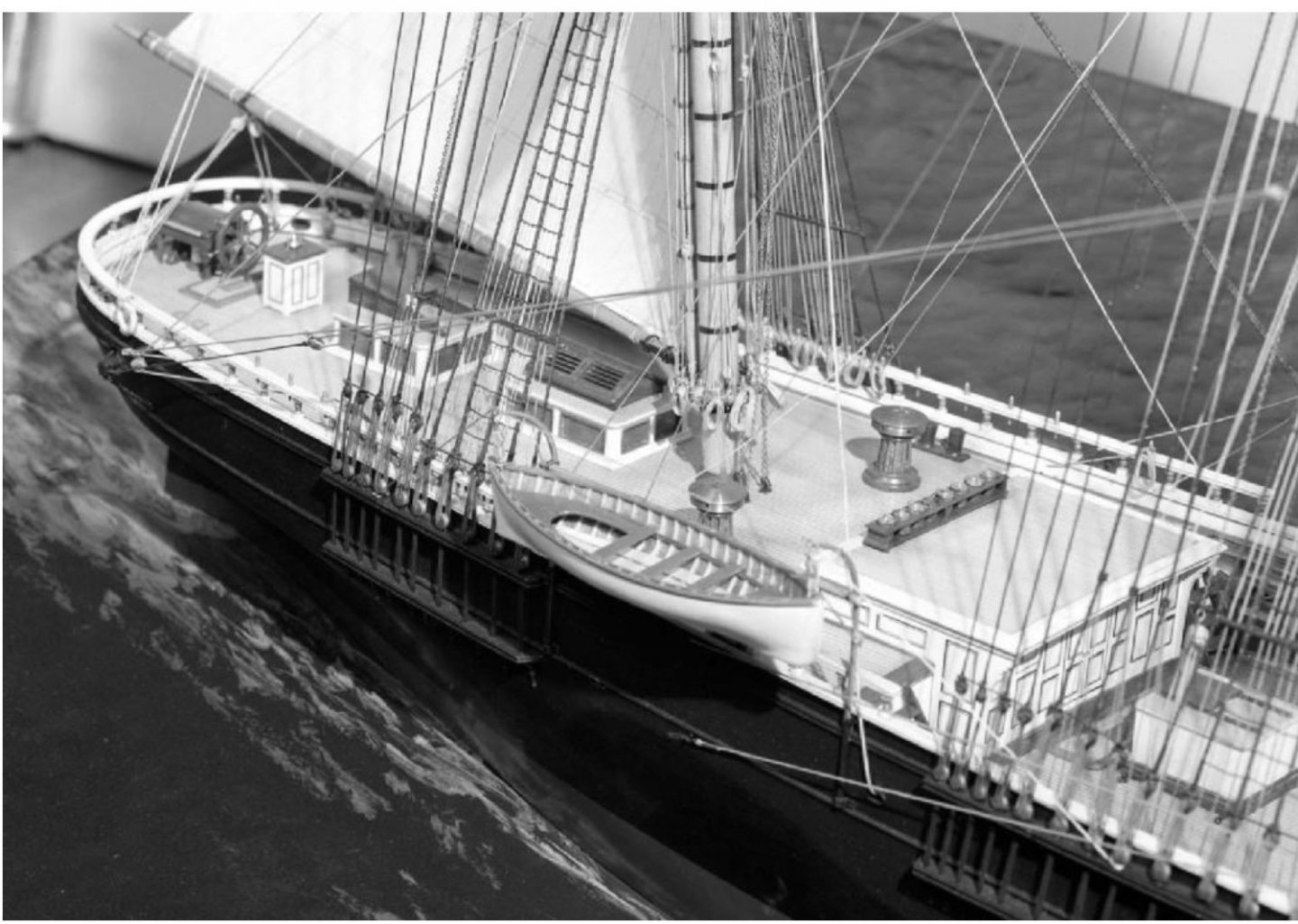

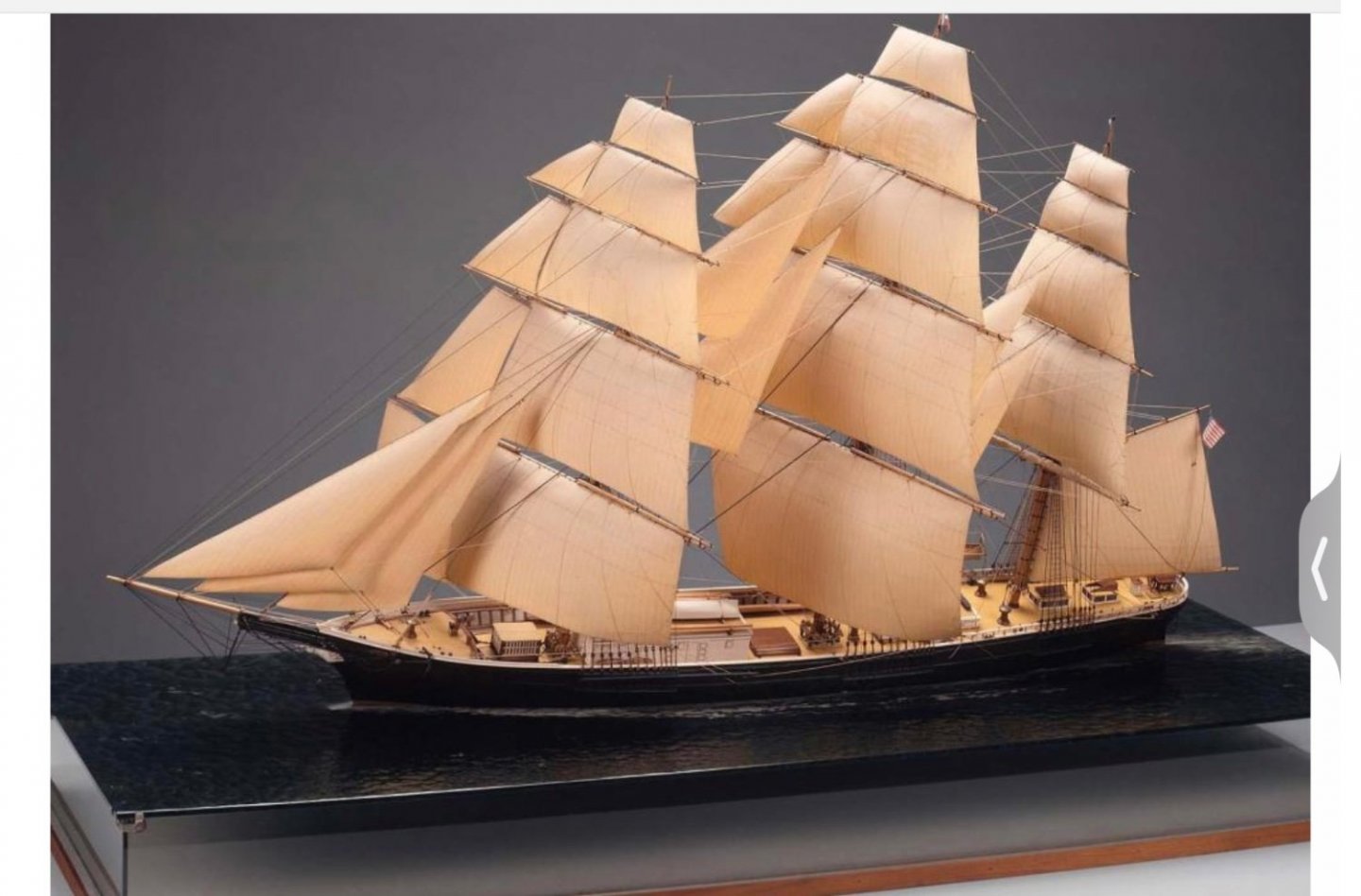
-
ClipperFan, I’ll do my best, probably next week as I have to go out of town.
Rob, nobody can criticize your decision as no knows for certain. I have doubts about my own solution although I believe it’s reasonable. To add to my uncertainty is the beautiful model of the Flying Cloud 1:48 scale at the Boston Museum of Art. I took pictures but was unable to discern the mizzen pin rail. It appears that there is one pin between stanchions fore and aft of the shrouds and 2 pins between stanchions in the way of the mizzen shrouds. Can’t tell if the rail is expanded and there are more pins. If not, then there are still not enough pins and this model has full sails.
-
Clipper Fan,
Thanks again for your input and suggestions. Really appreciated.
When I saw the China painting, I was at the preview of the auction and the room was pretty cramped and dark. That is why I was unable to get a full picture of FF. I believe the colors are fairly accurate given how good the photos for the catalog were.
-
ClipperFan,
Once again thank you for your input. The curved end of the taffrail could certainly be brass although it appears to be wood on the Chinese painting, something I have wondered about. What is concerning is that the rail on the aft cabin roof is poorly depicted-wood or brass. I agree with you that it is probably brass although the end of the rail is awkward and doesn’t look right. I prefer the depiction by Buttersworth and intend to model it out of brass as painted by Buttersworth.
Interestingly, curved metal rails
At the fore end of a wood rail as shown on the Glory photo is frequently seen in photos and paintings of some of the large 4, 5, 6, masted schooners built in the late 1800s and early 1900s.
Rob,
I completely agree with you about the mizzenmast pin rails. What I modeled on FF, was seen on ships built many years later. Was this a new innovation or one that persisted from earlier times? I think your solution is every bit as plausible as mine. I just don’t know and I still don’t know if there are any other alternative that make sense. It is so frustrating to have photos or paintings that don’t quite show the detail you are looking for. What ever you decide, your model of Glory sets a standard other models will be compare too.
-
-
-
ClipperFan, I agree that the rail on top of the aft cabin is probably brass. That is how I intend to model it as shown on the Buttersworth painting. I hope to model the aft cabin as you suggest, curving towards the stern.
-
After I had completed the aft cabin bulwark and the forward companionways, I decided to move onto the channels. However it occurred to me that I needed to complete the top gallant rail and the taffrail first. I was afraid I would break off the channels attempting to attach the rails. This was one of the projects I was really dreading given the asymmetry of the stern. I purchased stanchions from Bluejacket to replace the ones provided with the kit. The stanchions from Bluejacket are much nicer. I attempted to make a jig to bend the rails with some success after multiple attempts. Of course the asymmetry was still a headache. I made both the top gallant and taffrails, attached the top gallant rail, measured and cemented the stanchions and finally the taffrail. Prior to this I measured the taffrail for the belaying pins and immediately found that there wasn’t enough room for all the mizzen belaying pins. From photos of the Benjamin Packard I notice that the taffrail was expanded(wider) for the belaying pins on the mizzen mast. This is also seen on the Star of India in San Diego. I understand that these are both much later ships. Therefore I expanded the rail in the way of the shrouds and backstays. I will still have to add additional pins fore and aft on the taffrail as needed. I have no evidence that this was done on the FF. If I tried to squeeze in additional pins between the stanchions, it would be crowded and difficult to belay the lines. This solution seems reasonable to me. I should add that anytime I’m unsure what to do and the plans aren’t specific or seem wrong, I try to find examples of what was done on another ship if possible.
I also decided to shorten the taffrail. This was done because the China trade painting depicts them as not extending so far forward as the plans and the point where they turn down as being left bright. As posted before, shortening them would have the advantage of functioning as a hand rail for the steps to the poop deck. The Buttersworth painting does not depict the turn down of the fore end of the taffrail rail but ends at the forward side of the aft deck house.
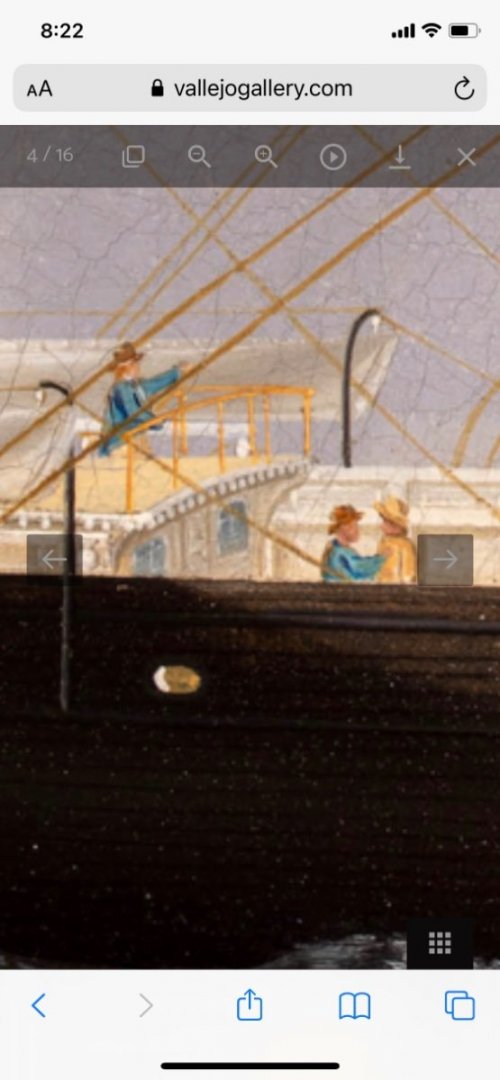
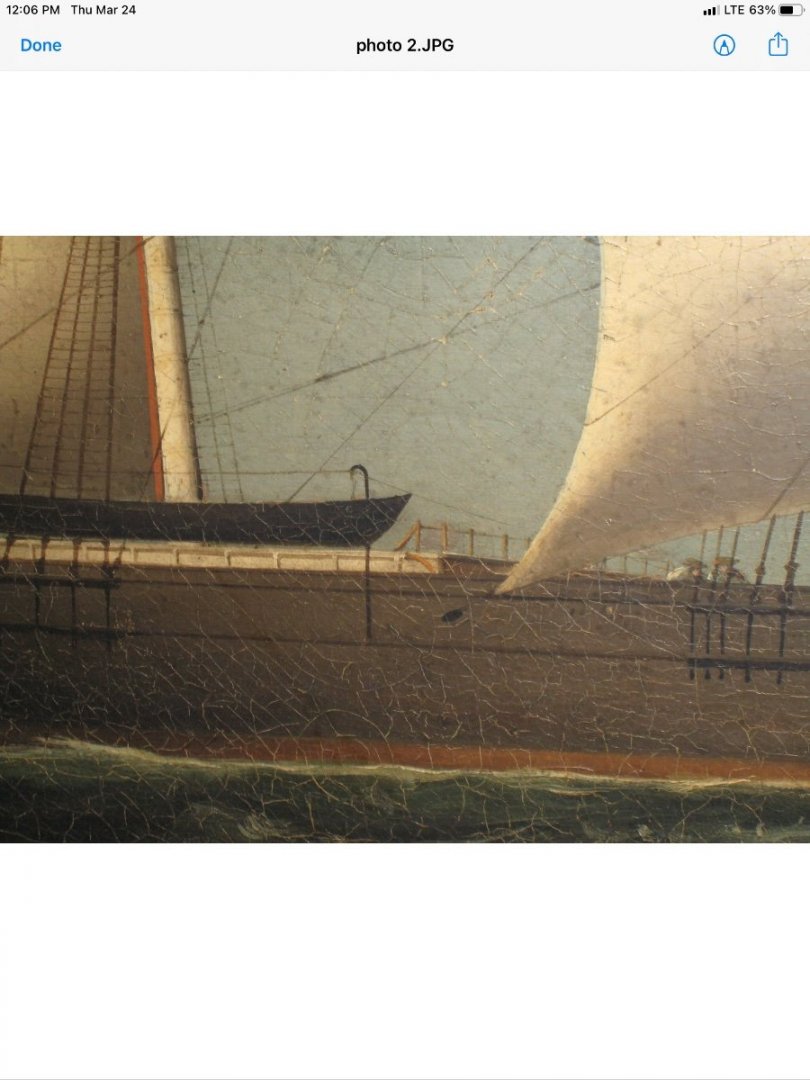
Bending the end of the taffrail was a challenge because the basswood kept crushing and I had no luck with boxwood. It took me almost 2weeks to get 2ends that were usable. These were stained with Minwax Ipswich pine. I also used this stain on the gangways which were made out of cherry because a mahogany stain ended up being too dark.
-
-
Hi Rob,
no, Ian going to address this in another post. There is not enough room on the taffrail for all the belaying pins without them being crowded. I choose to expand the taffrail to accommodate all the pins. This is the same as the Benjamin Packard and the Star of India in San Diego which is a much later ship. I have no evidence that this was done on the Flying Fish. Call it artistic license LOL
-
An excellent observation ClipperFan and I agree with you about the placement of the windows. I am not going to correct this version as I’m not sure I can do it without having to remake the entire bulkhead. I also have the plank on bulkhead version of the flying fish so that when I am done with this version I can correct my mistakes on the next. This too I will also correct.
in regards to your truly excellent work on The Naval hood with Glory of the Seas, may I recommend the book ship carvers of North America by Brewington. It was published I believe in 1963 and is out of print. I understand he’s considered the definitive work for American ship carvings. He has included three or four pages devoted to The Naval hood and the transformation of the cut water to take the smaller figureheads and billet heads for the clipper ships and the transformation from upright to leaning forward to reduce weight. I believe you would find this extremely interesting. I Also want to commend you for the beautiful drawings you have rendered, especially of the flying fish. I am attempting to carve the figurehead and I find your drawings to be very useful. Thanks again
-
-
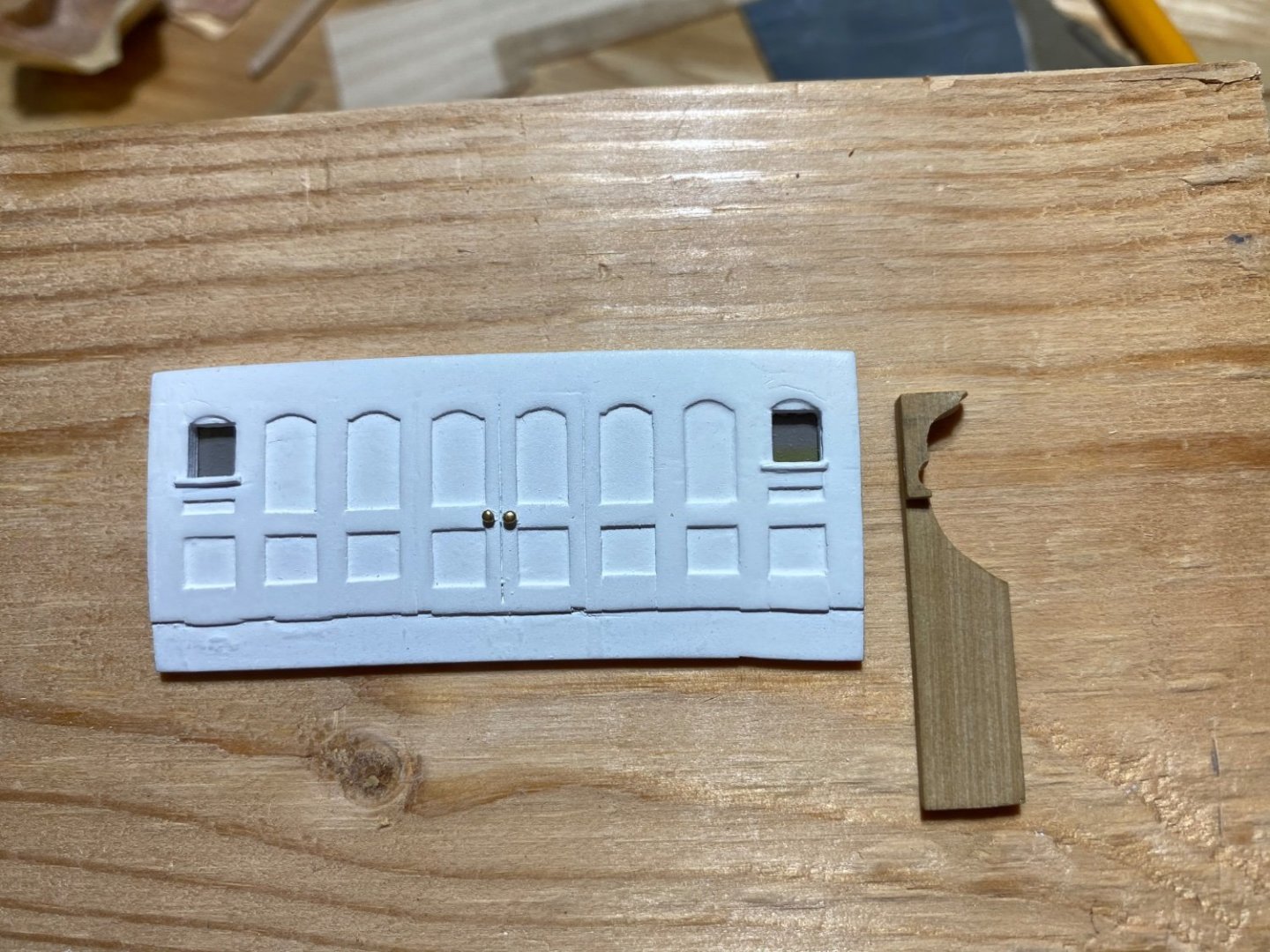
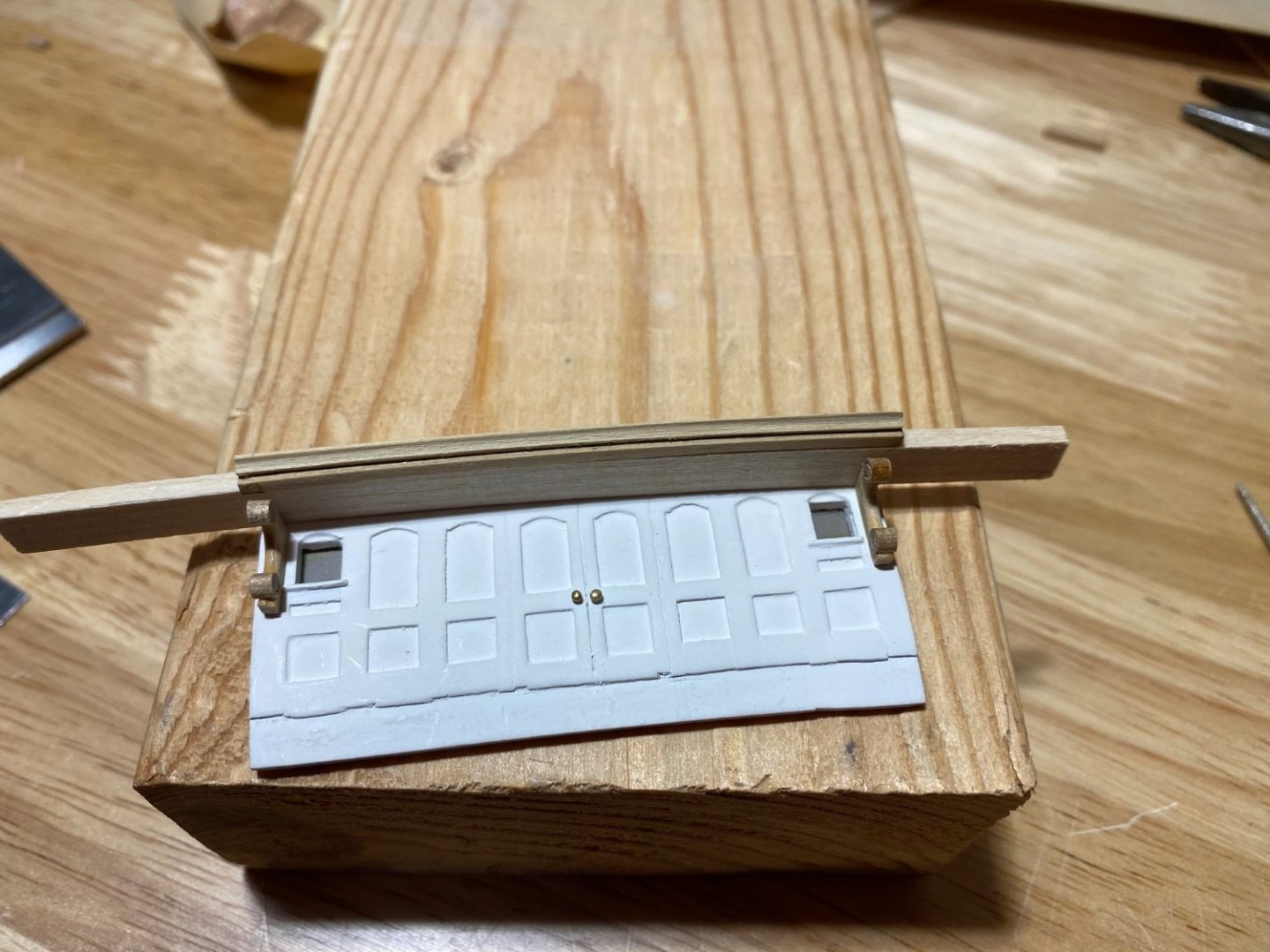
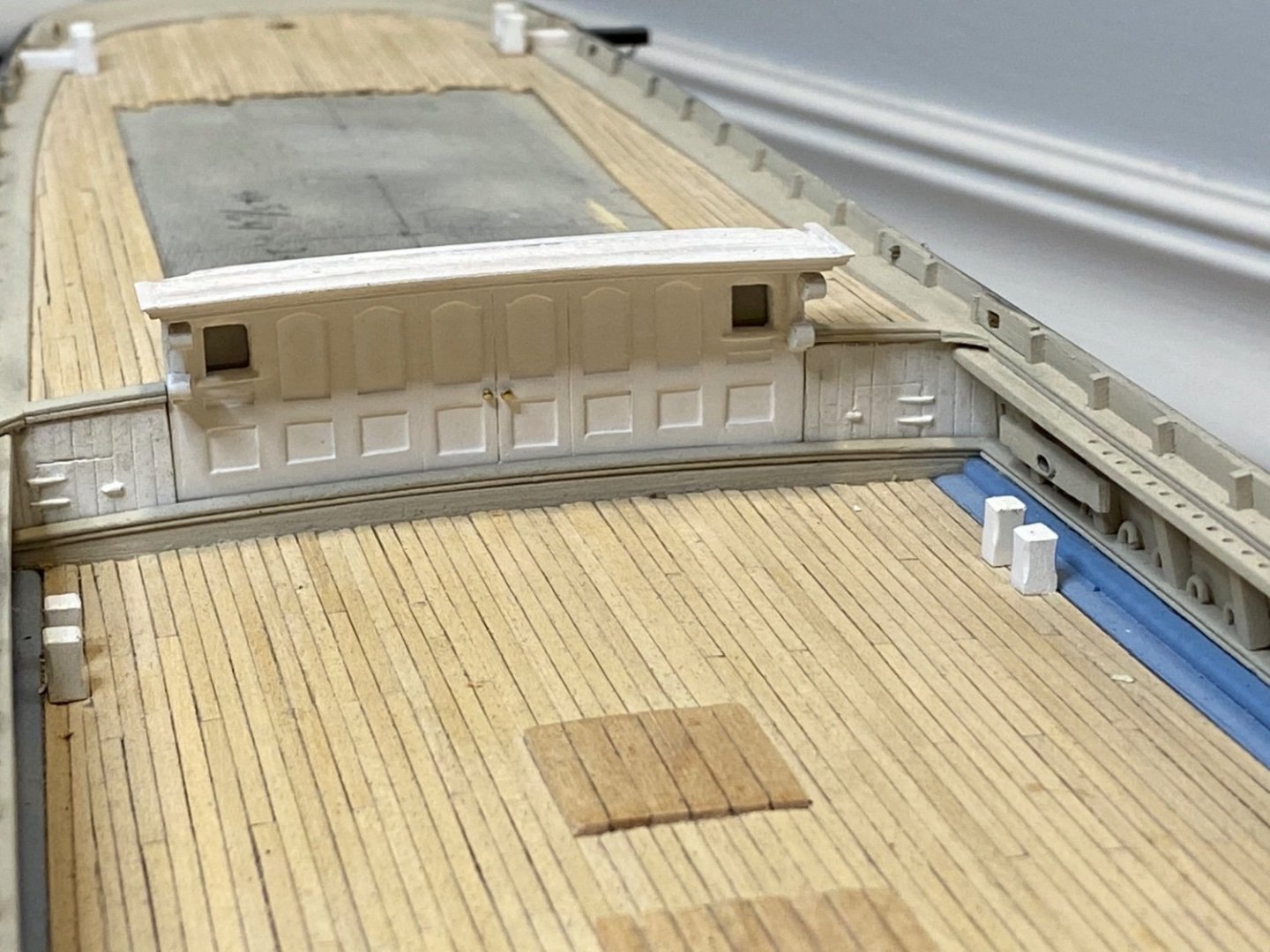
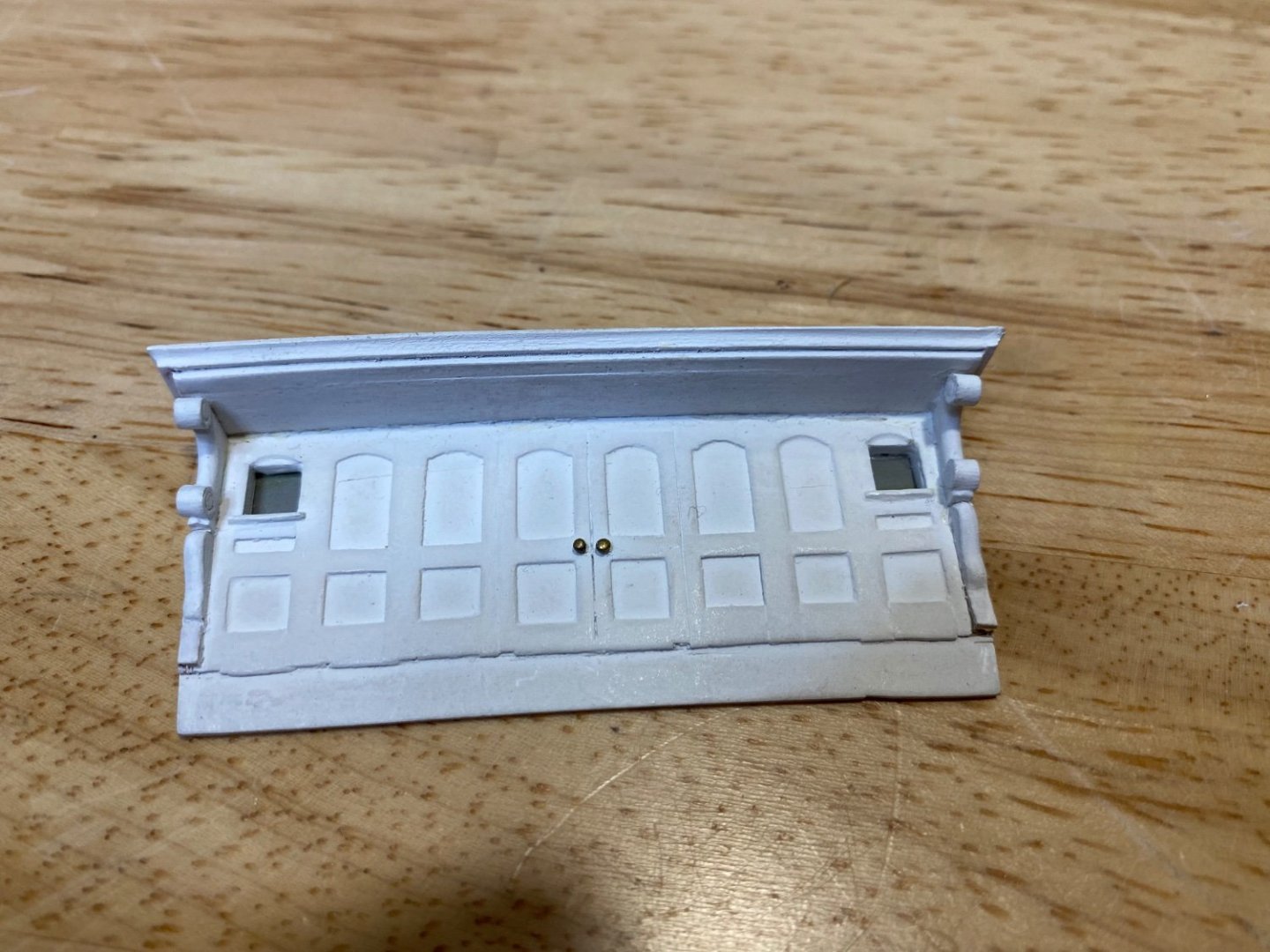 About this time, the photos of the Buttersworth painting became available online, clearly depicting 2 windows on either side of the aft cabin. The windows were added and the fancy knees where then made along with the molding which was again modeled after the Packard. At his point I was unsure about windows and elected not to place any.
About this time, the photos of the Buttersworth painting became available online, clearly depicting 2 windows on either side of the aft cabin. The windows were added and the fancy knees where then made along with the molding which was again modeled after the Packard. At his point I was unsure about windows and elected not to place any.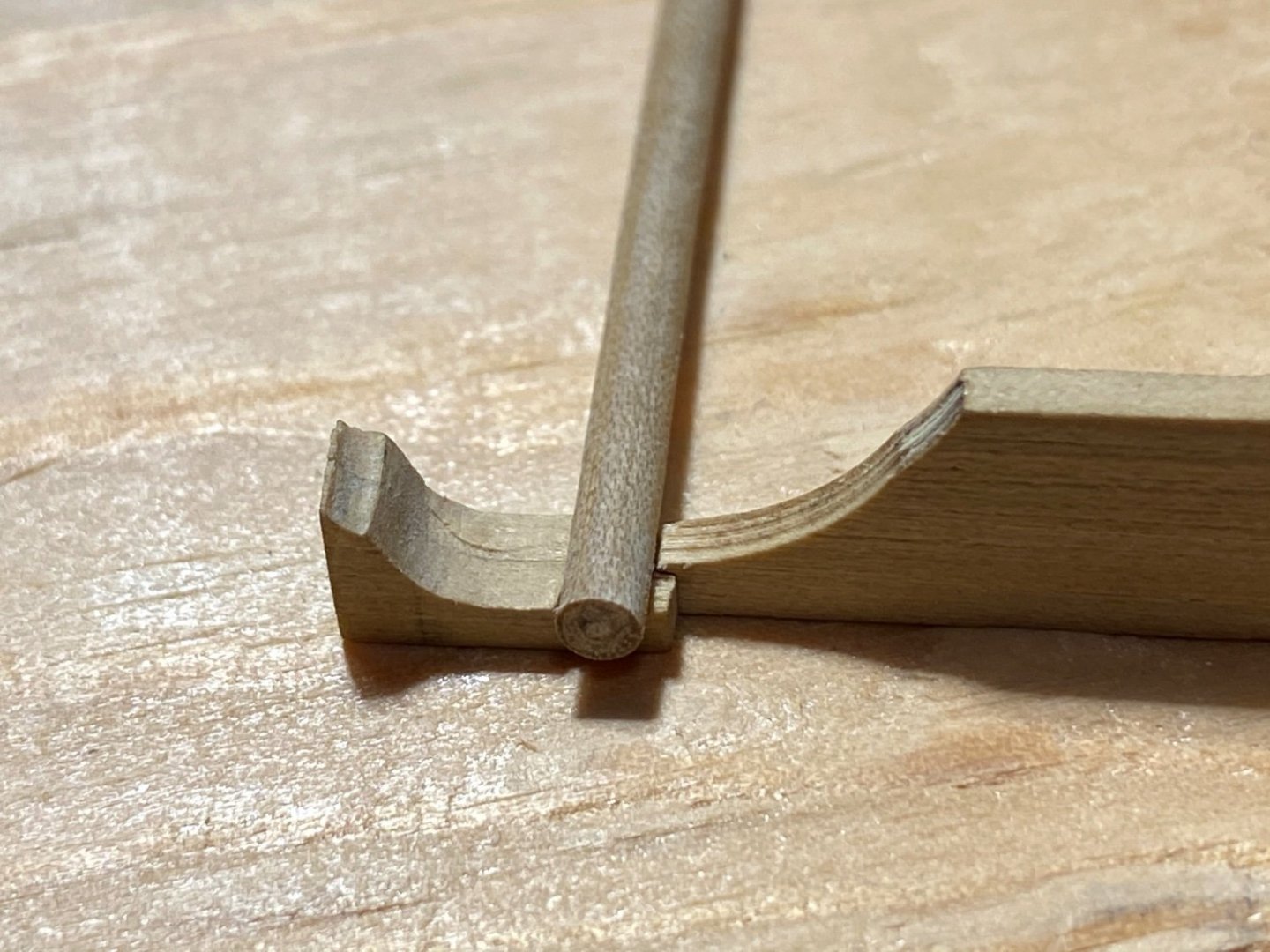
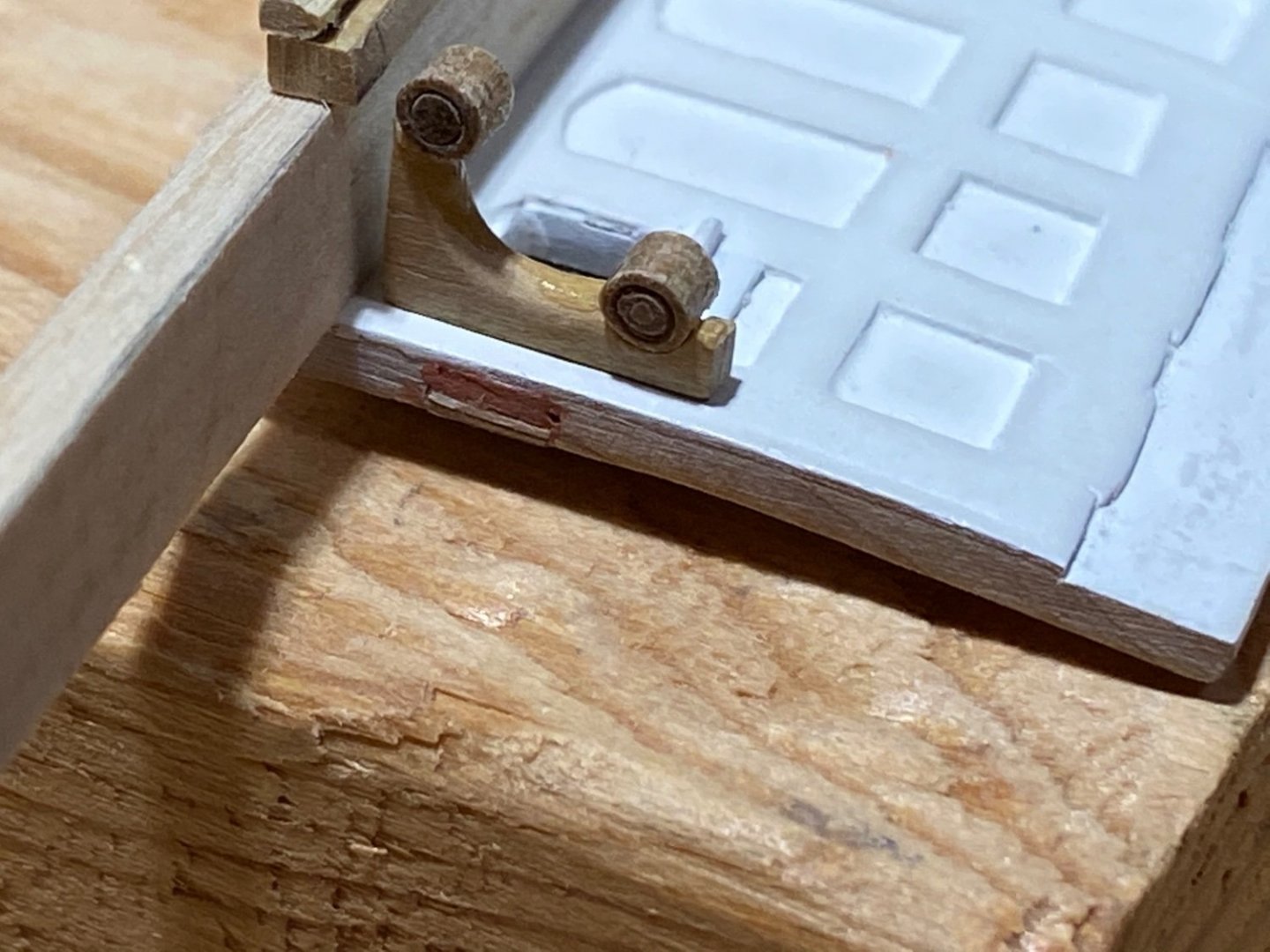
-
When I purchased the FF model and reviewed the plans, the aft cabin face as depicted on the plans just didn’t look right to me. With all due respect to those who developed the plans, It is not aesthetic and the asymmetry with just the one window bothered me especially when compared to photos of the Benjamin Packard and the Glory of The Seas that have beautiful aft cabins. Therefore I decided to model the aft cabin similar to the aft cabin of the Packard. This was done prior to the Buttersworth painting being made available. This is what I came up with.
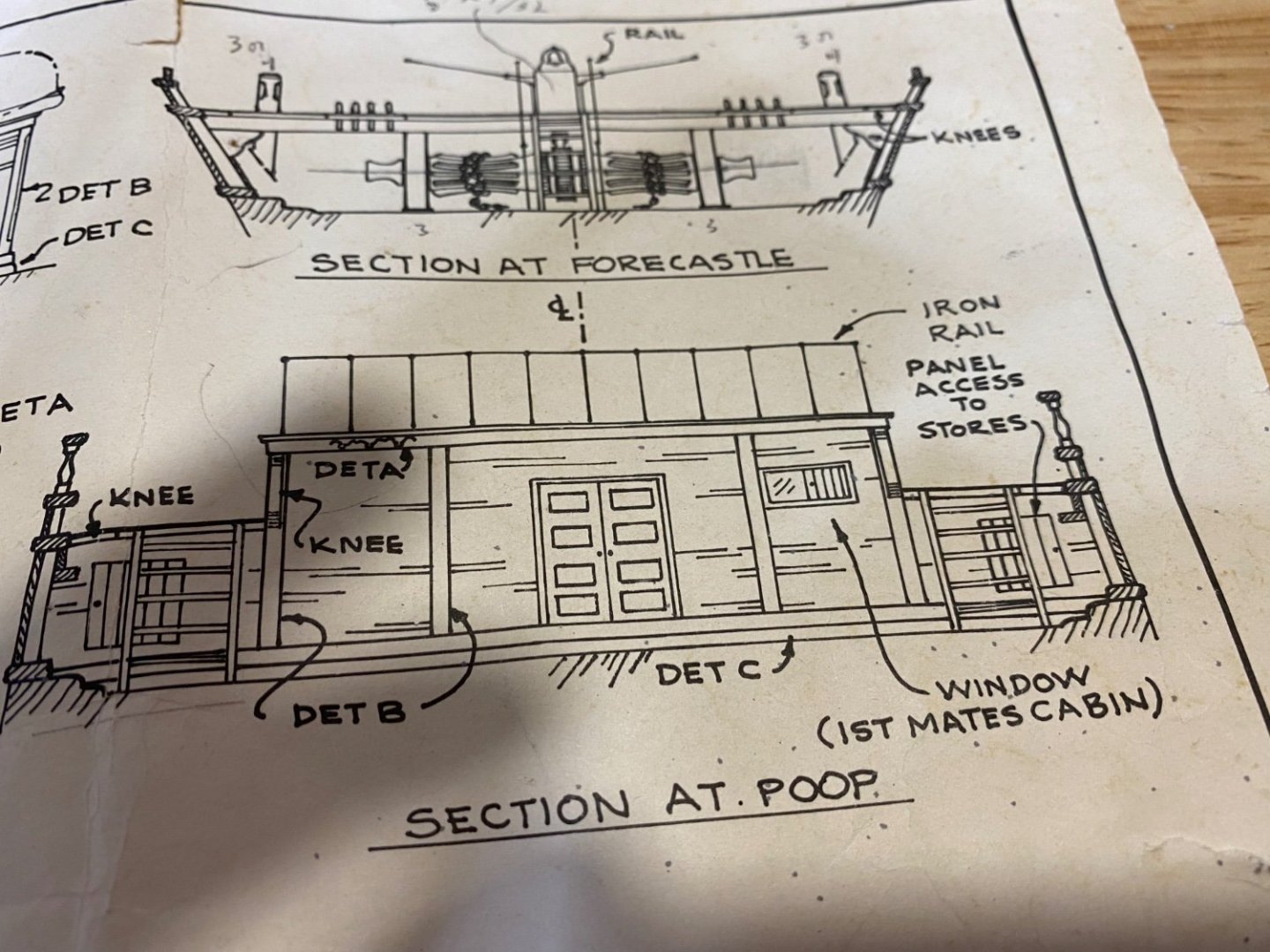
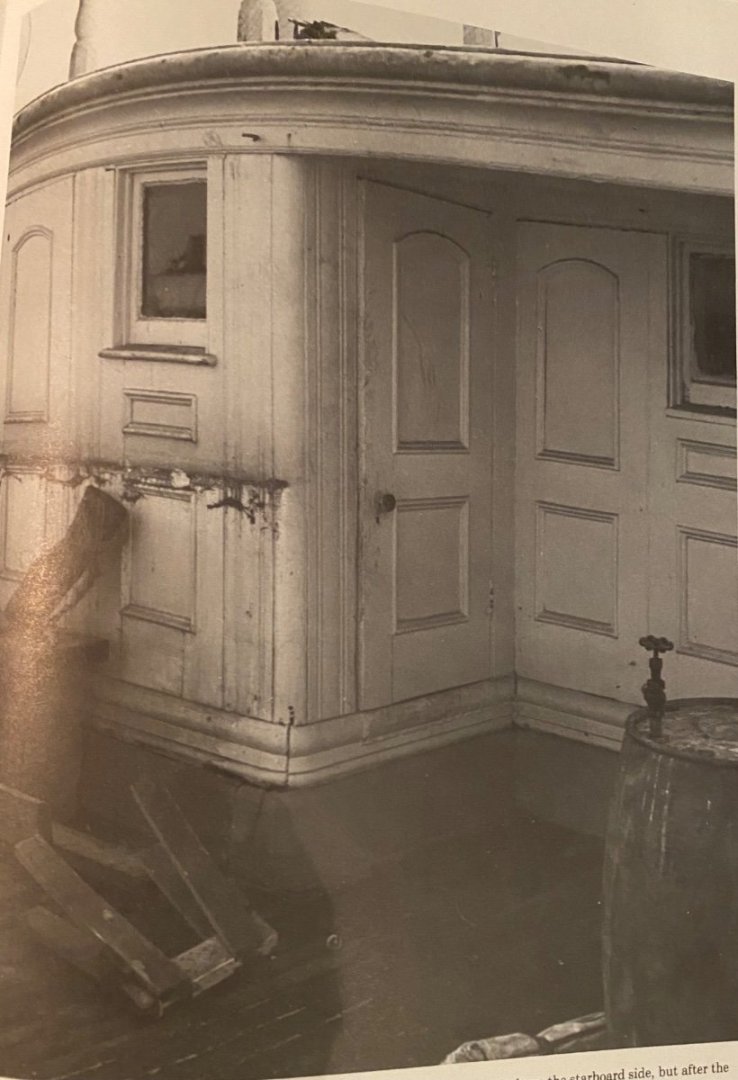
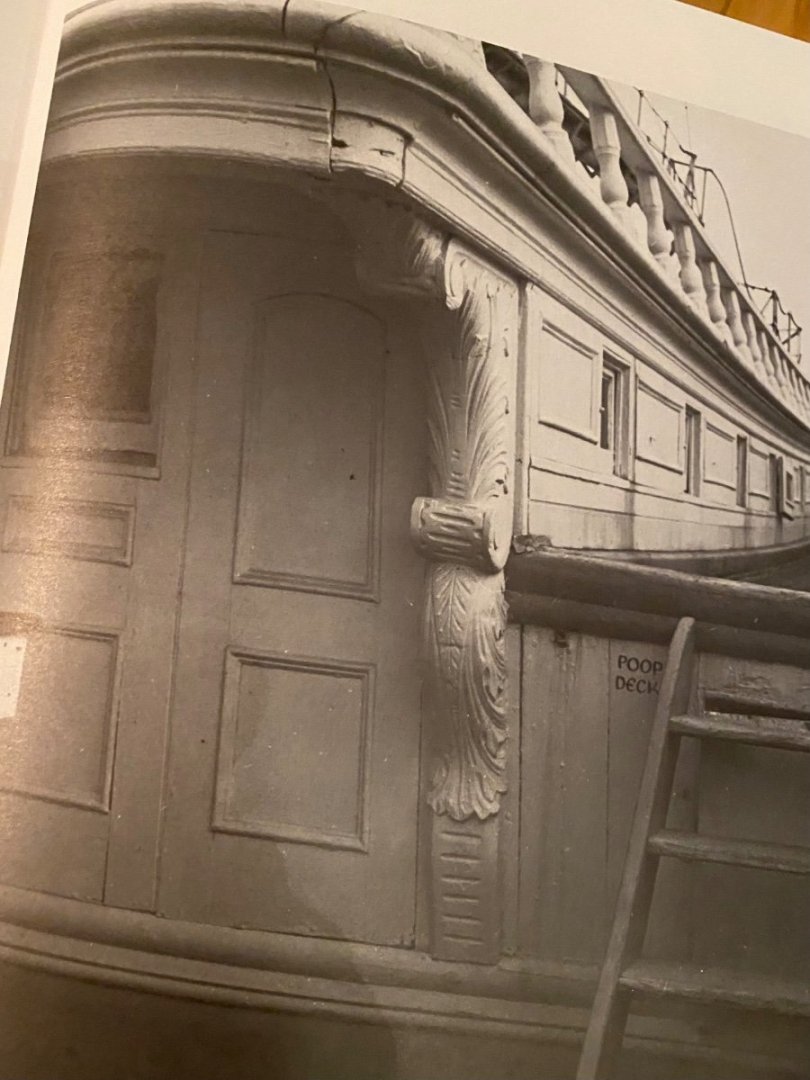
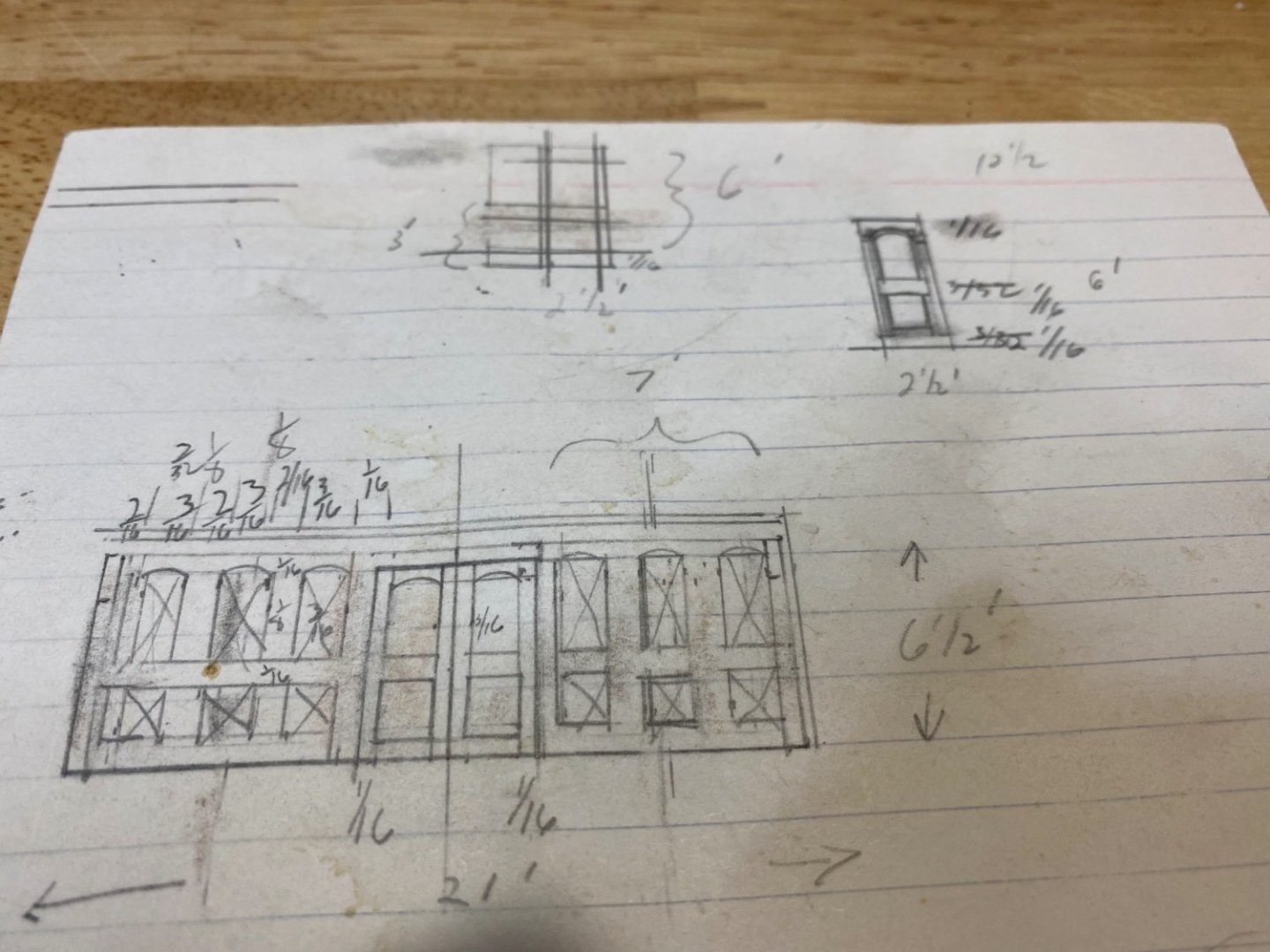
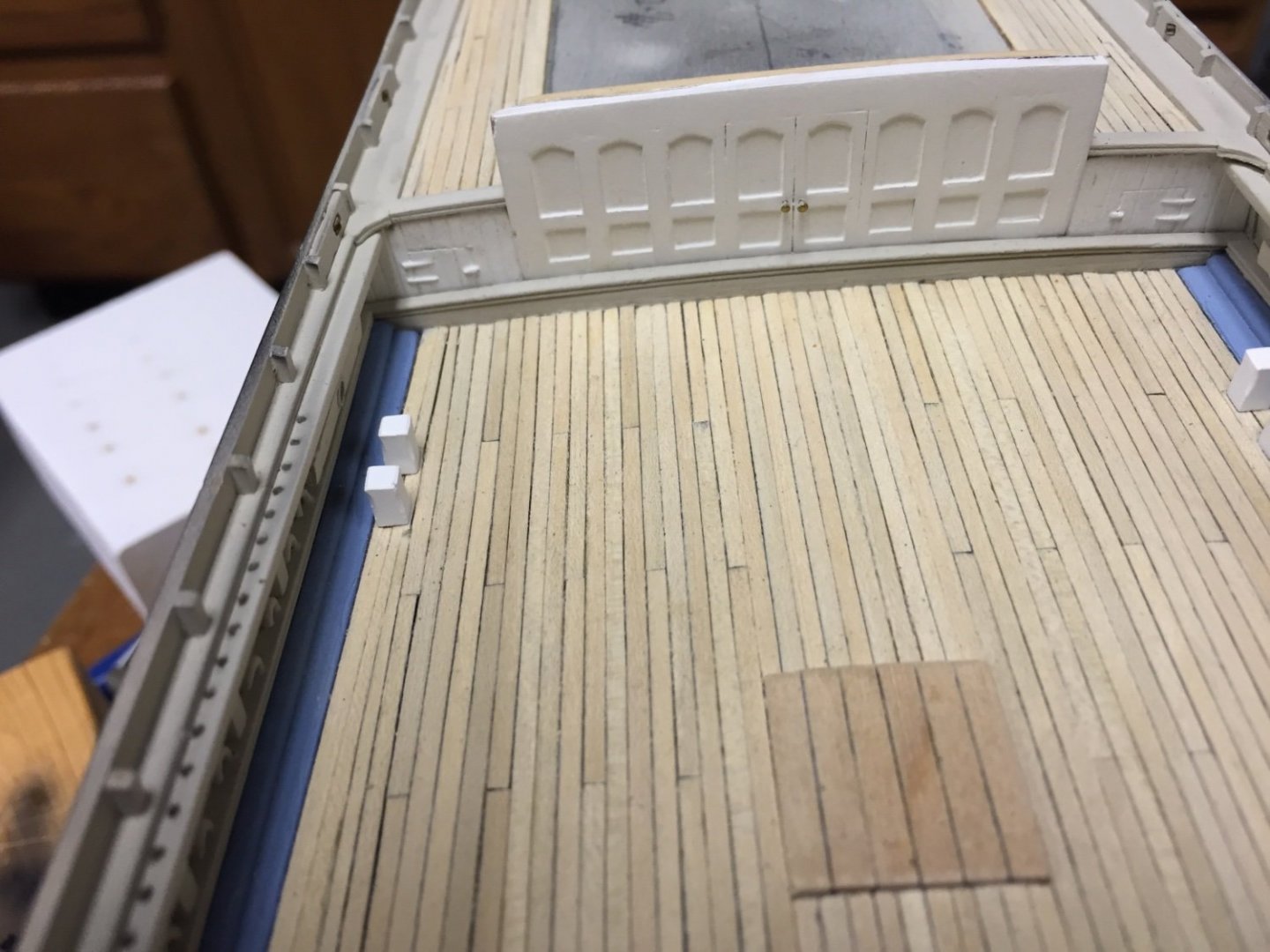
-
Rob,
How do you plan to rig the head stays on Glory? It appears on the one photo of Glory, the one of the figurehead from the port side, that the stays set up under the forecastle. The Flying Fish is rigged the same way.
-
Rob, looks great!! And the coppering is superb!!
-
When I purchased this model some 40 years ago I had no previous woodworking or metalworking experience such as soldering. So obviously choosing this model as my first wooden model ship, I made a good choice! LOL
I immediately ran into problems when I started carving the hull in that I was never able to establish or maintain a consistent centerline. I also made the mistake of trying to carve out the bulwarks instead of cutting them out and replacing them with sheet stock. The result is that the hull is not symmetric which caused large problems when it came time to plank the deck and place the main, top gallant and Taffrail and stanchions. The hull and the deck were planked with Holly, which was good for the deck and bad for the hull. The holly, being very flexible, ended up being wavy on the hull, and instead of removing it and replacing it, I ended up sanding it down so that the plank lines were eliminated except at the bow and the stern.
I purchased copper sheets for the copper plating, not realizing it came with an adhesive on one side. This was a mess to remove but after that I held the copper sheet over an open flame to discolor it per Eric Romberg and then cut the Copper sheet into strips and cemented it on with contact cement. I did not do a very good job. It looks OK from a distance, but not very good up close. I also made the forward facing bulkhead of the aft cabin house, but more on that later, the main top gallant and taffrails, with stanchions purchased from Bluejacket. I did not like the white metal fittings that came with this kit
and decided long ago to replace them or make my own. The replacements from Bluejacket are of much better quality.
For references I have made extensive use of Wm Carothers American Built Clipper Ship, Paul Morris’s book on the Benjamin Packard which contains a wealth of information in the photos of the details of the actual ship as well as NRG ship notes, Model Shipways magazine, and mote recently EDT’s superb 3 volume set on the Young America.
- gak1965, Roger Pellett, Rudolf and 1 other
-
 4
4
-
Interestingly,the China painting shows the ship’s boats painted black whereas Buttersworth depicts them white. Also, theChina Painting has the fore end of the taffrail , where it turns down, as bright, not painted whereas Buttersworth omitted this detail. I believe the taffrail does not extend as far forward as depicted on the FF plans by Model Shipways. This makes sense to me as the curved part of the rail could function as a hand rail for the ladder/steps up to the poop deck. This is how I choose to model them. I believe that Buttersworth omitted this detail as opposed to the Chinese artist adding something that wasn’t there. The Chinese artist probably had first hand knowledge of FF where as Buttersworth may have painted from descriptions of FF? Just my opinion.
-


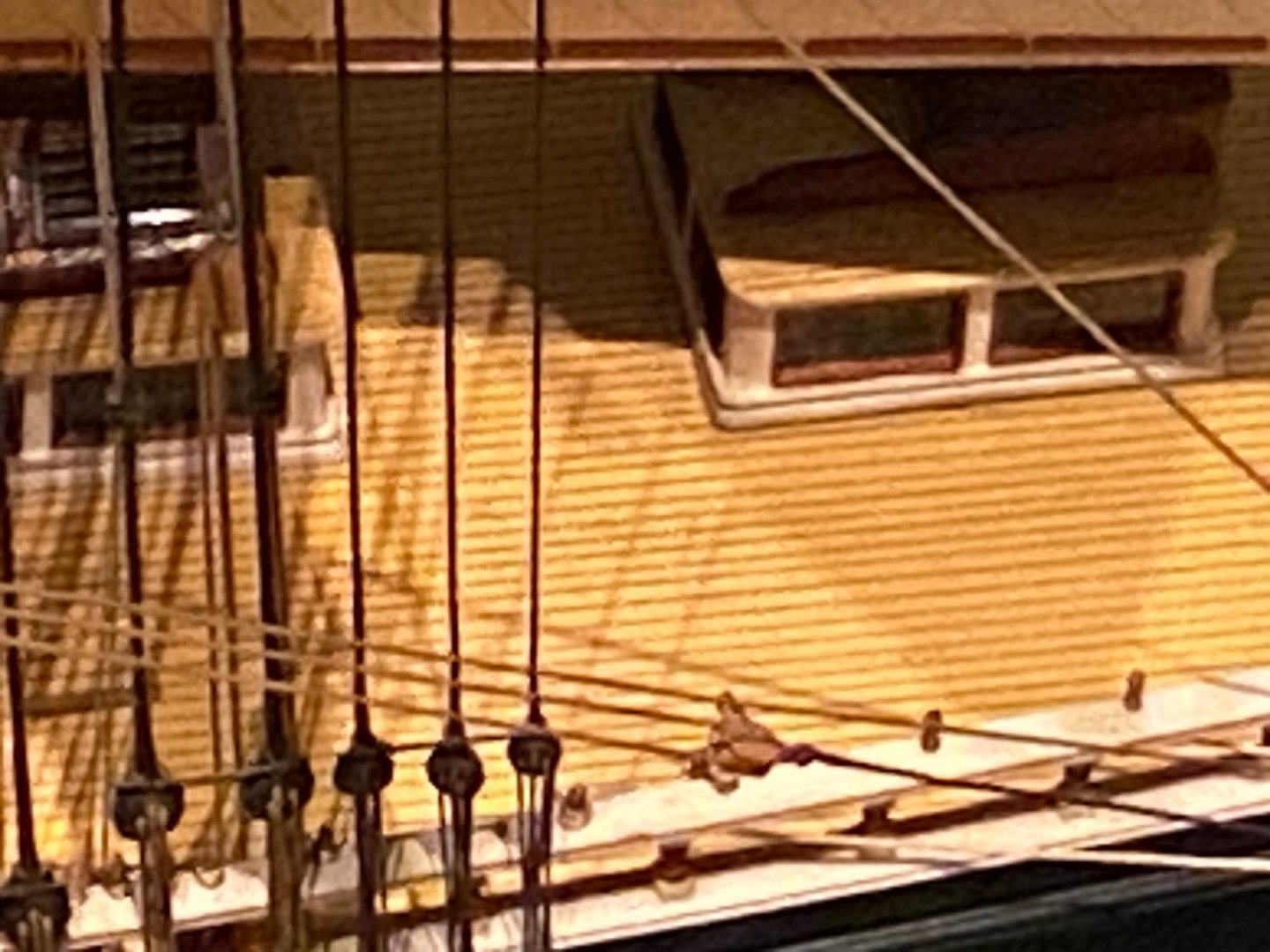
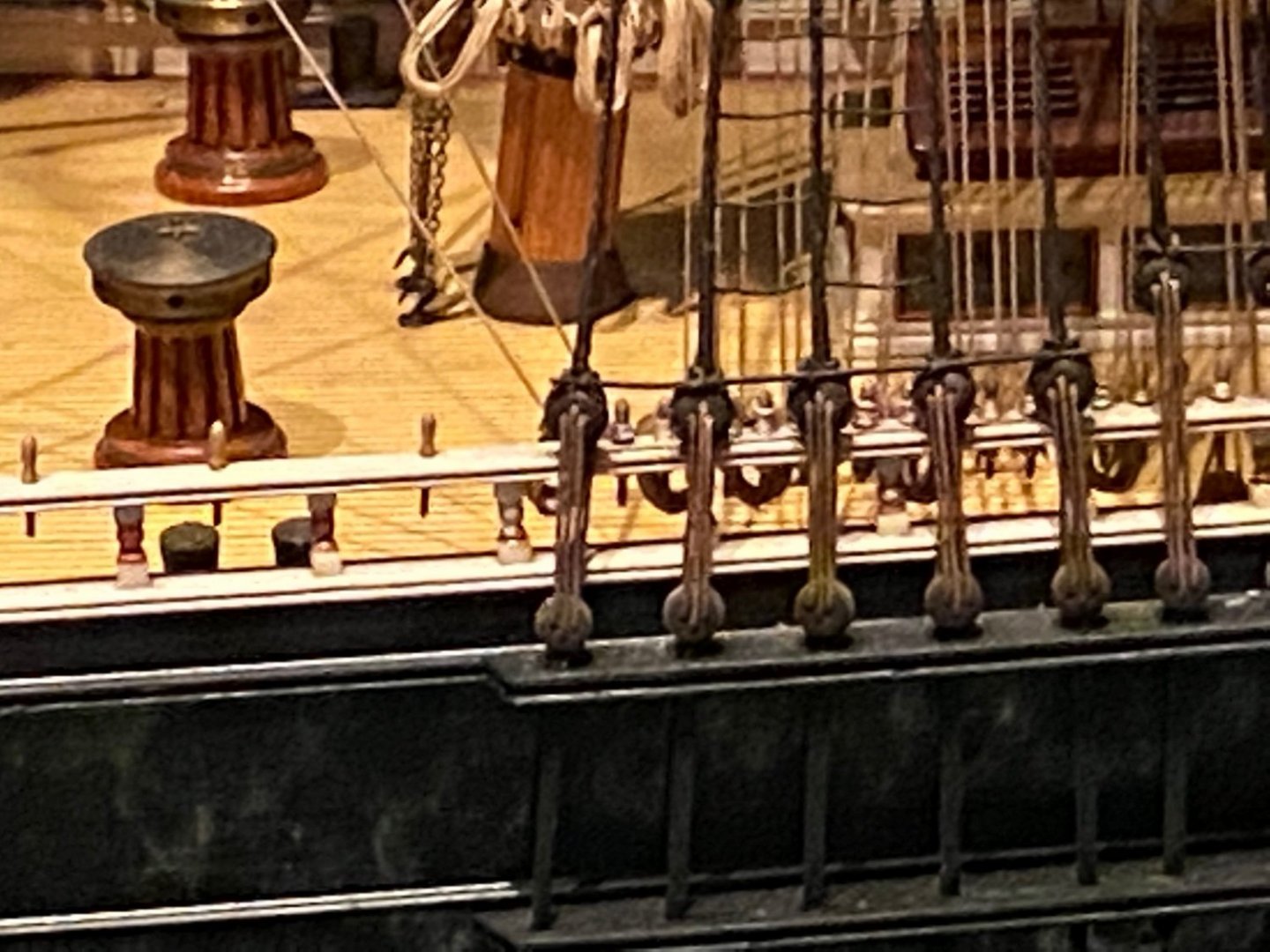
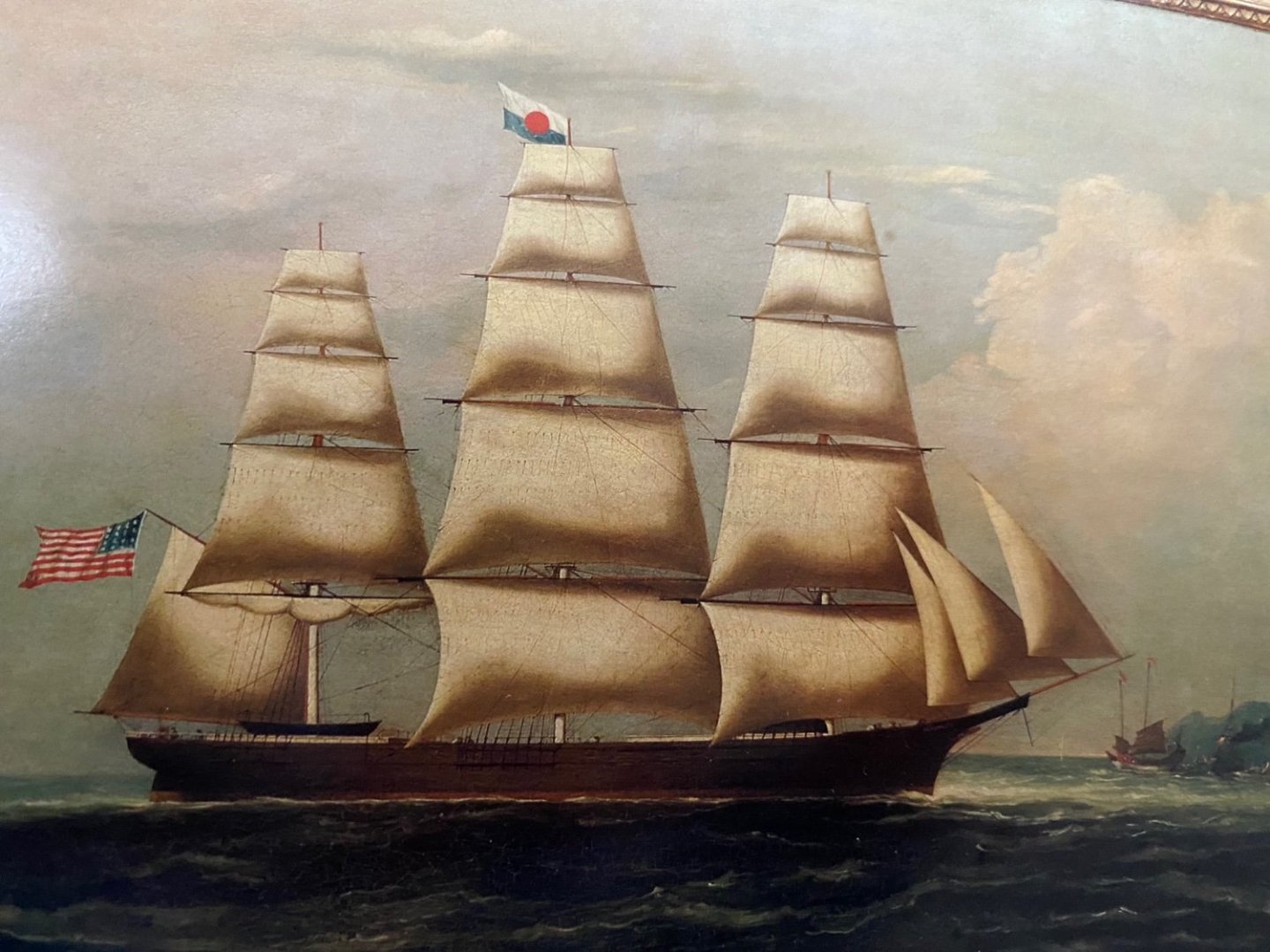
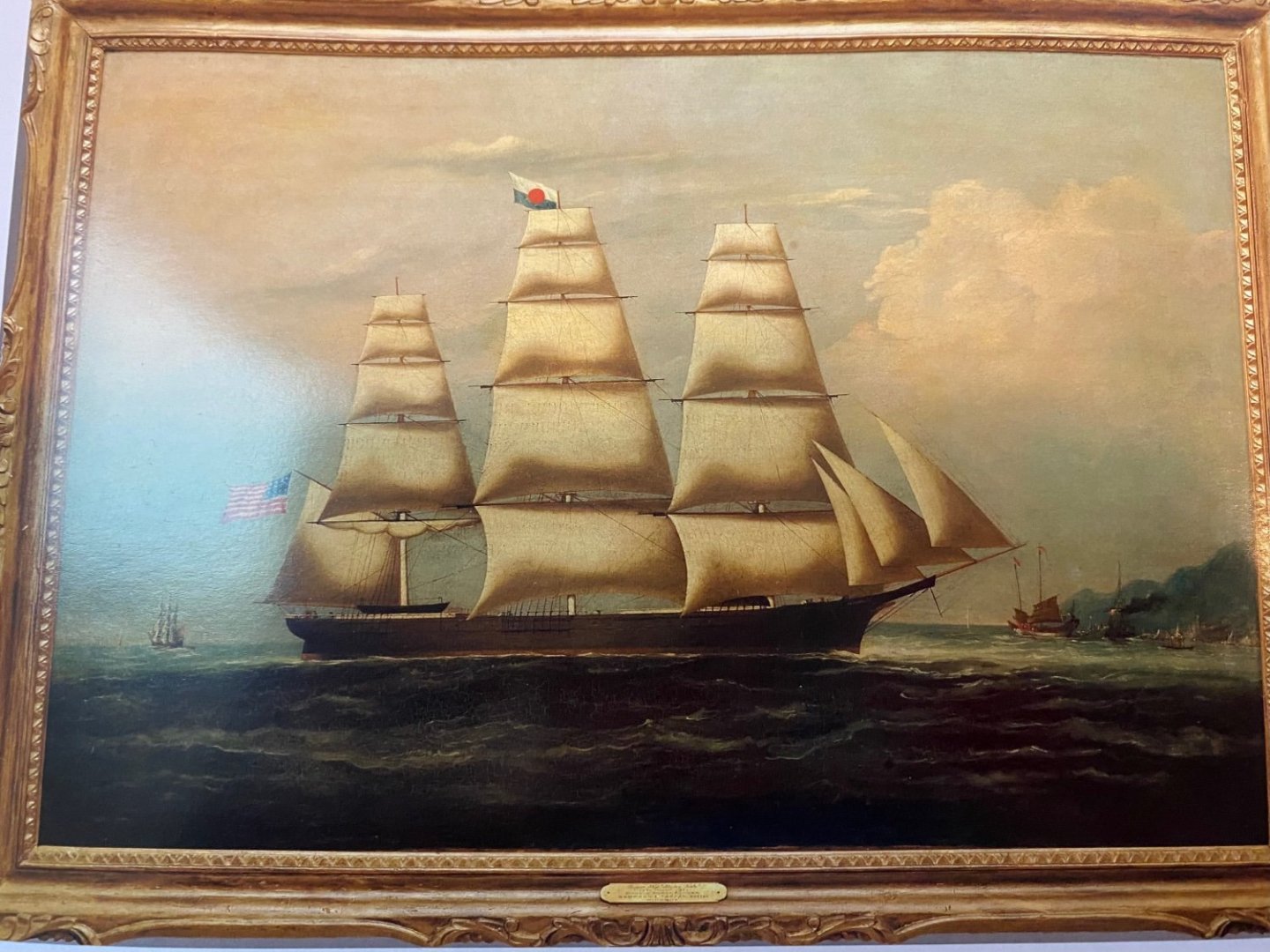
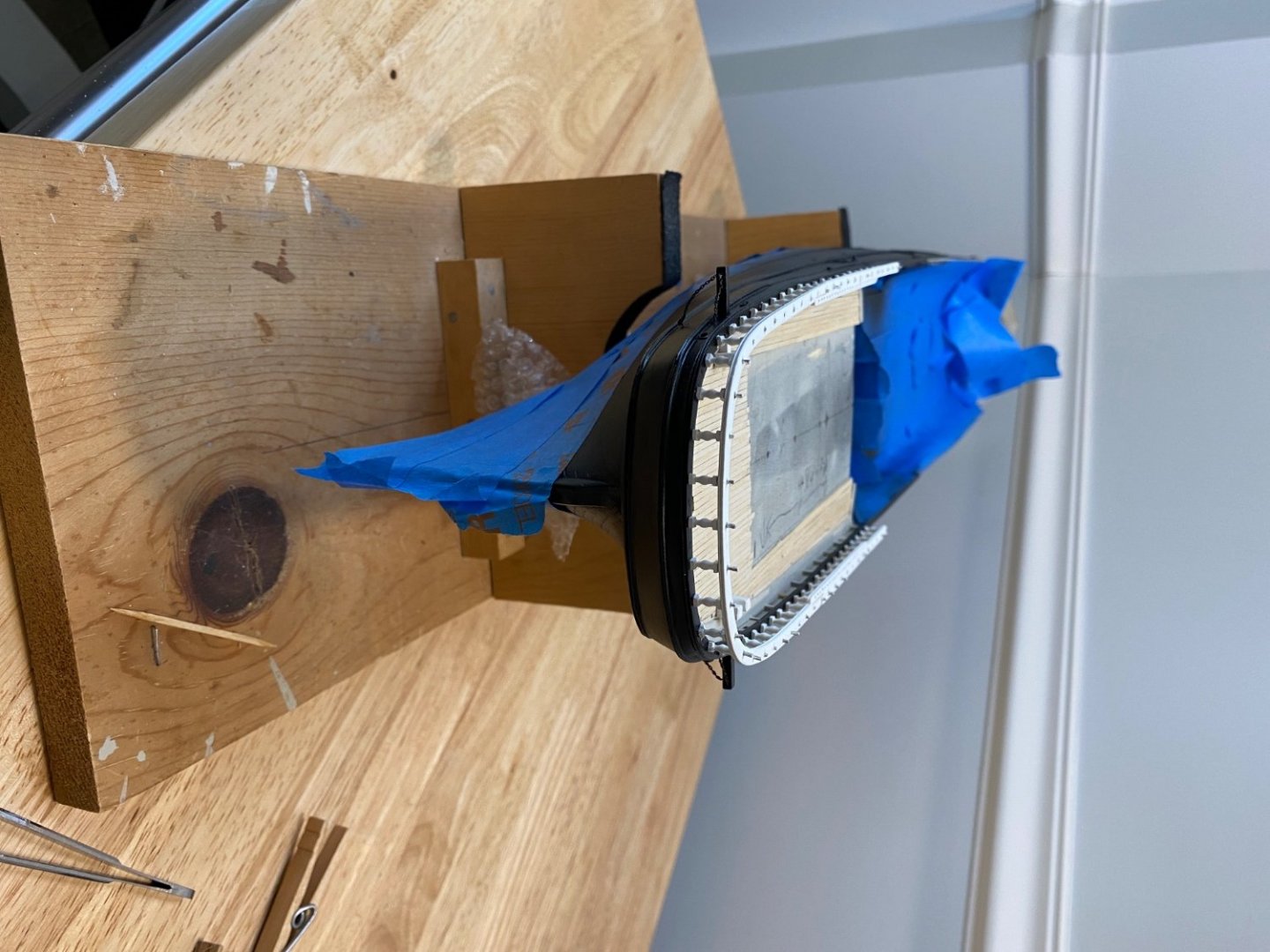
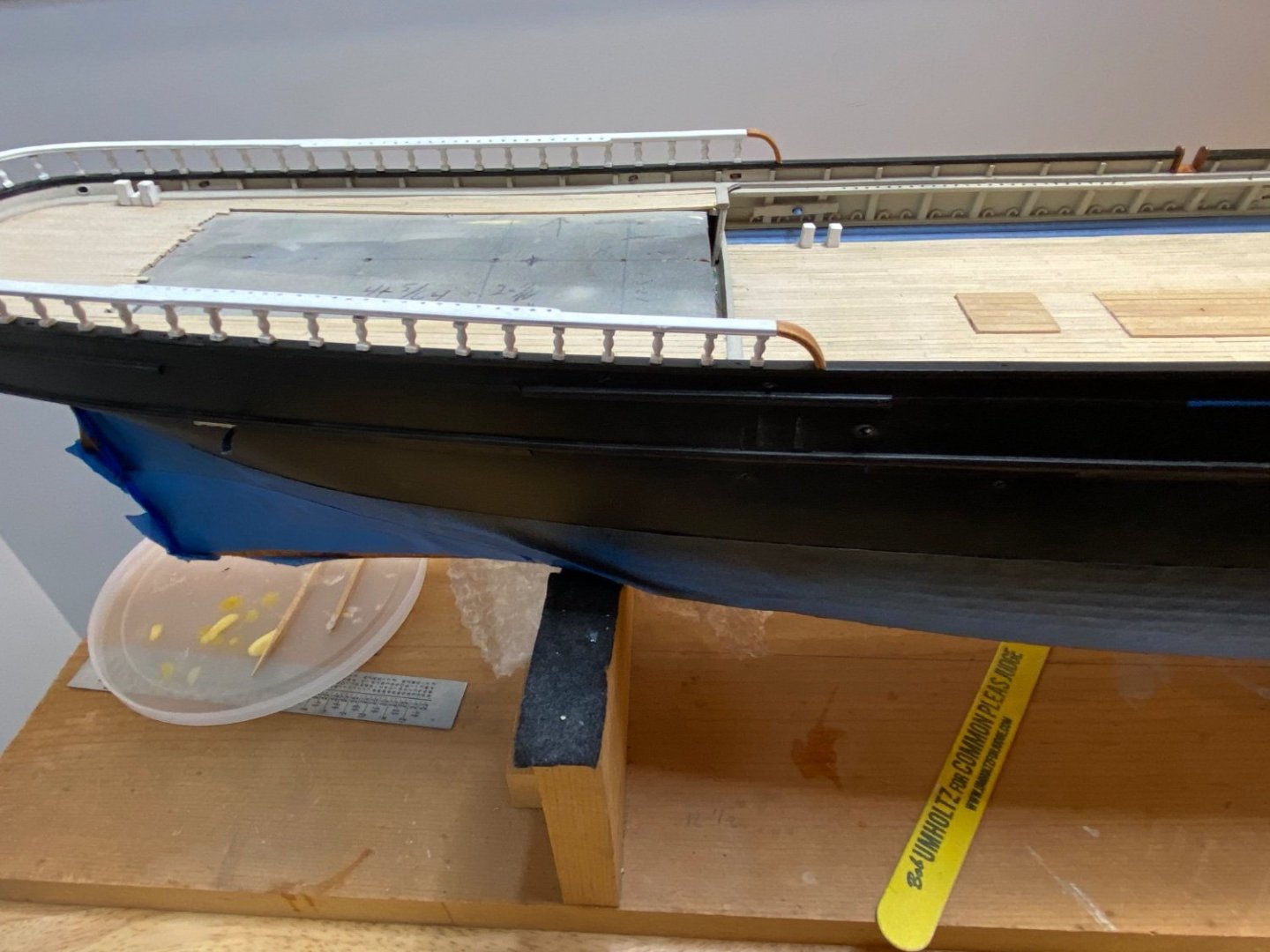
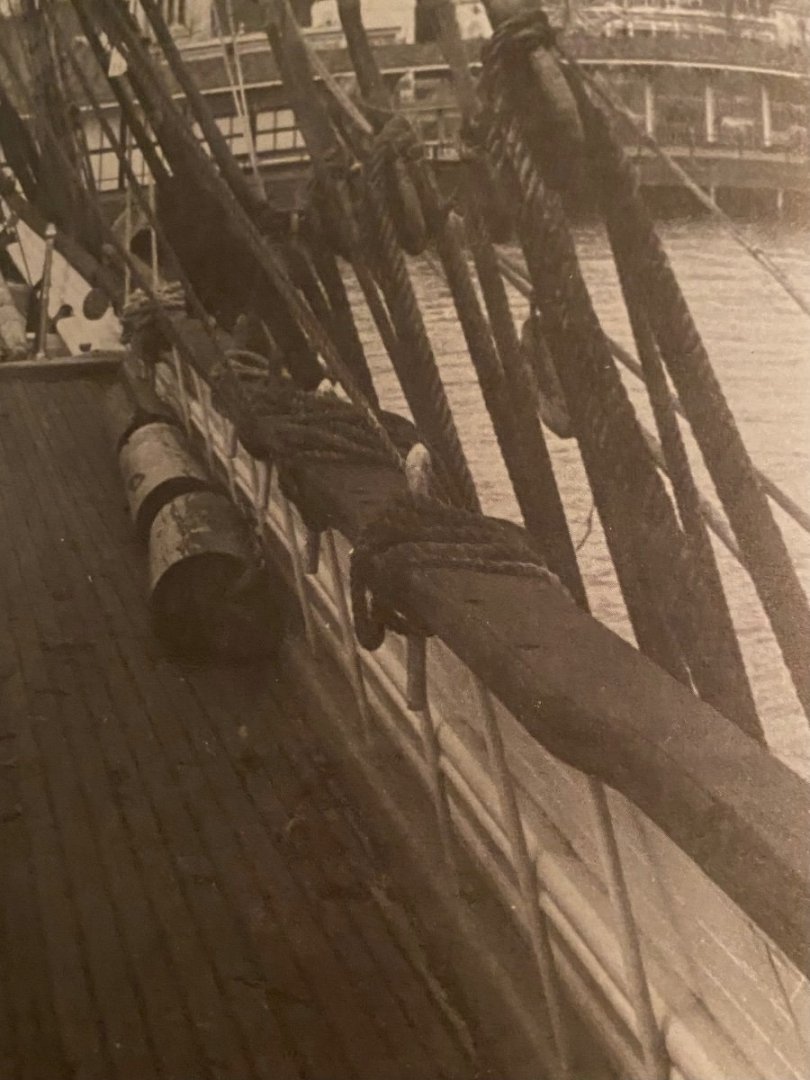
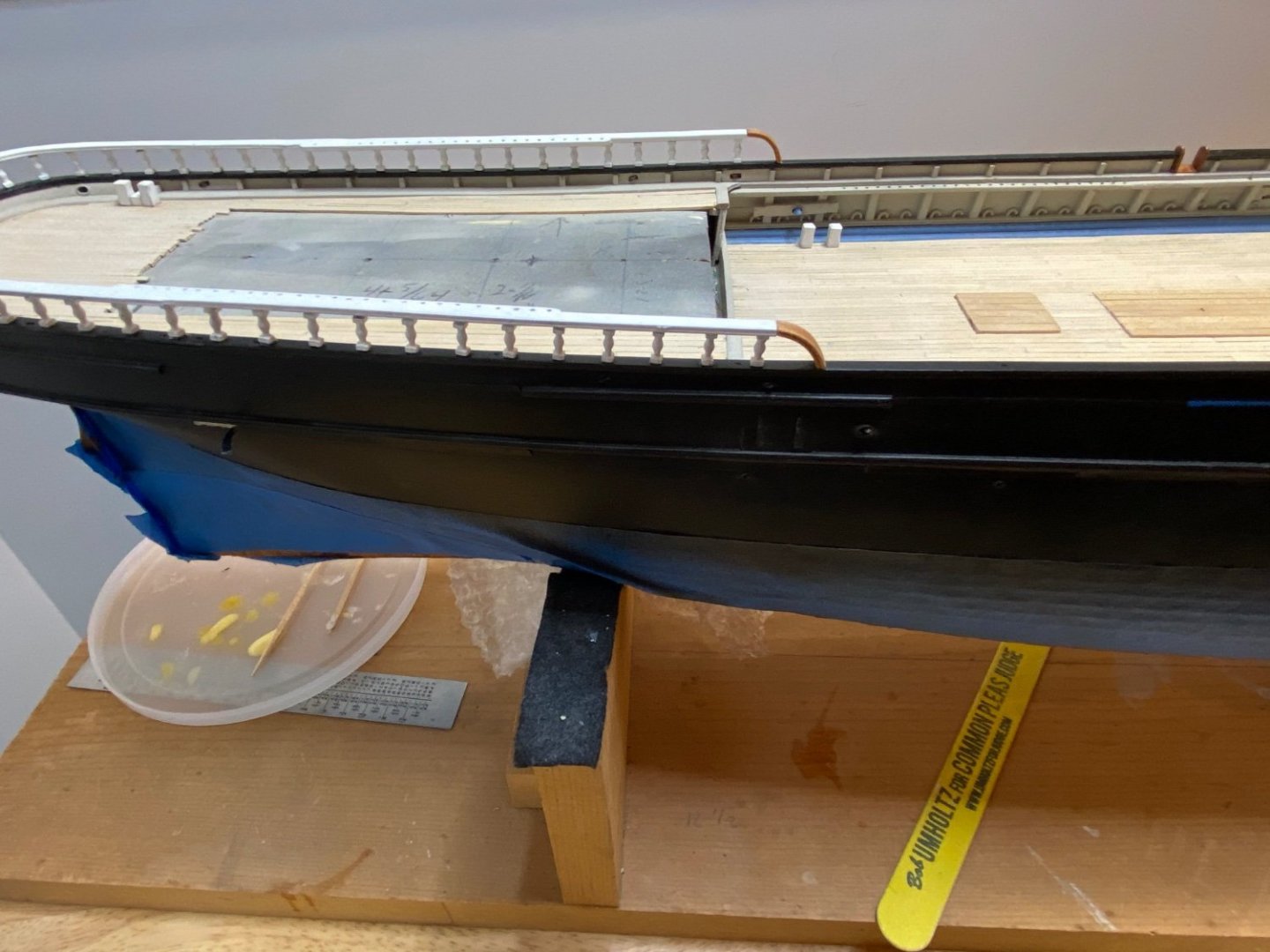
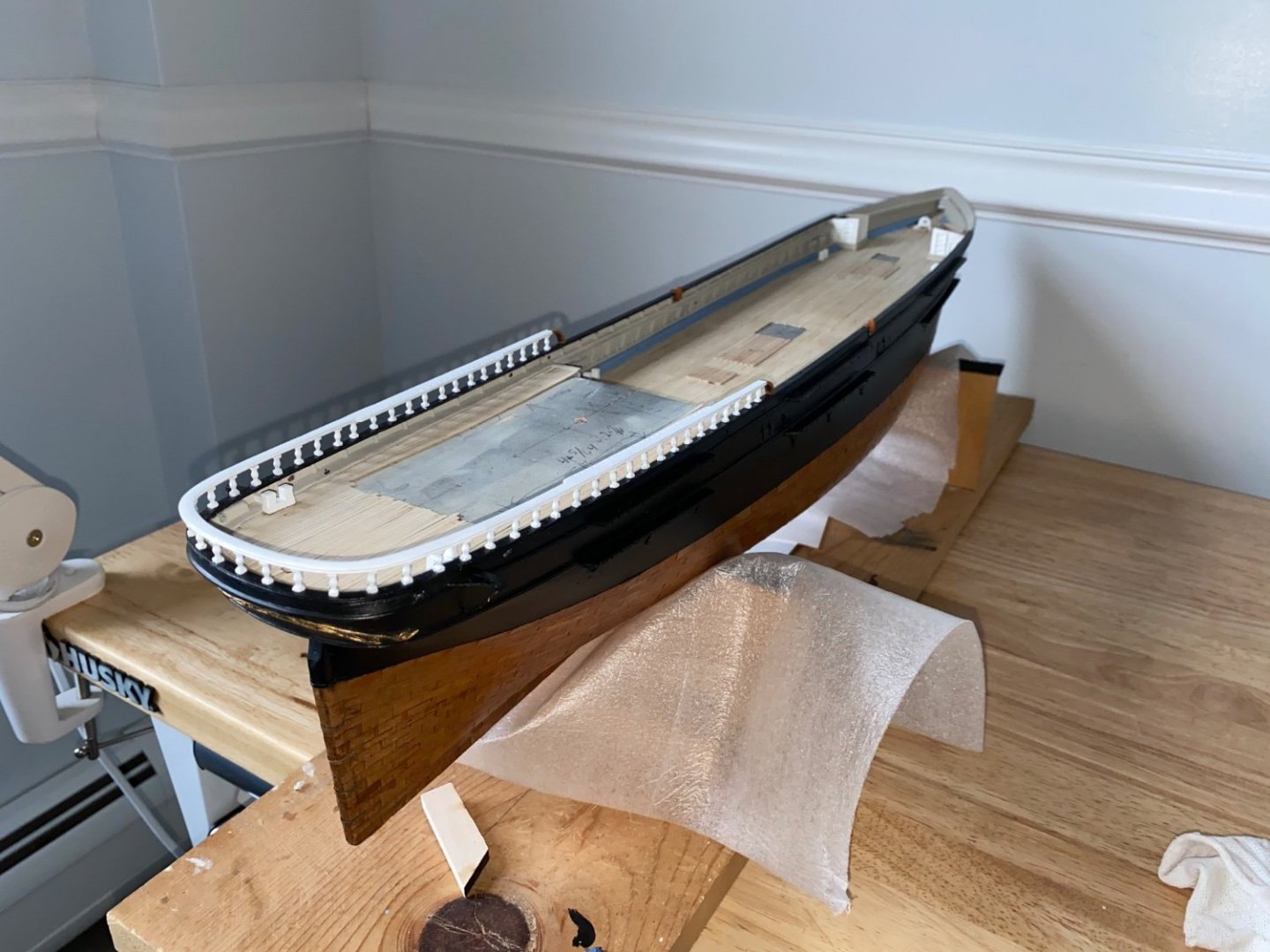
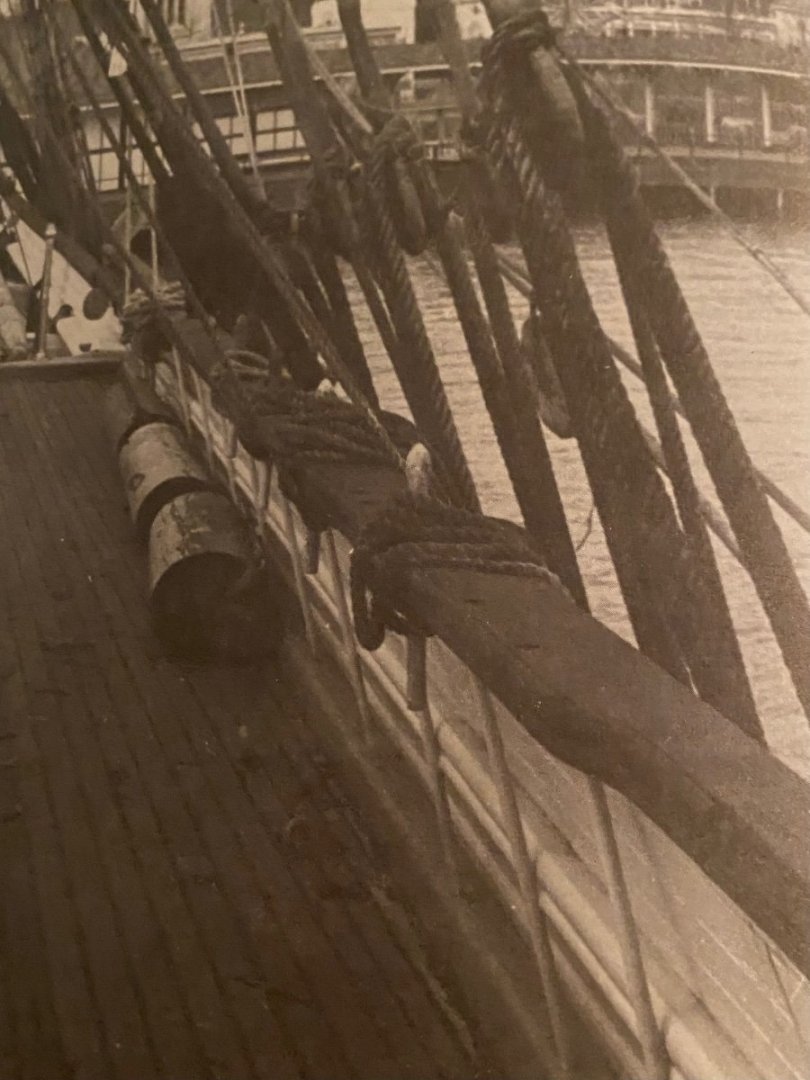
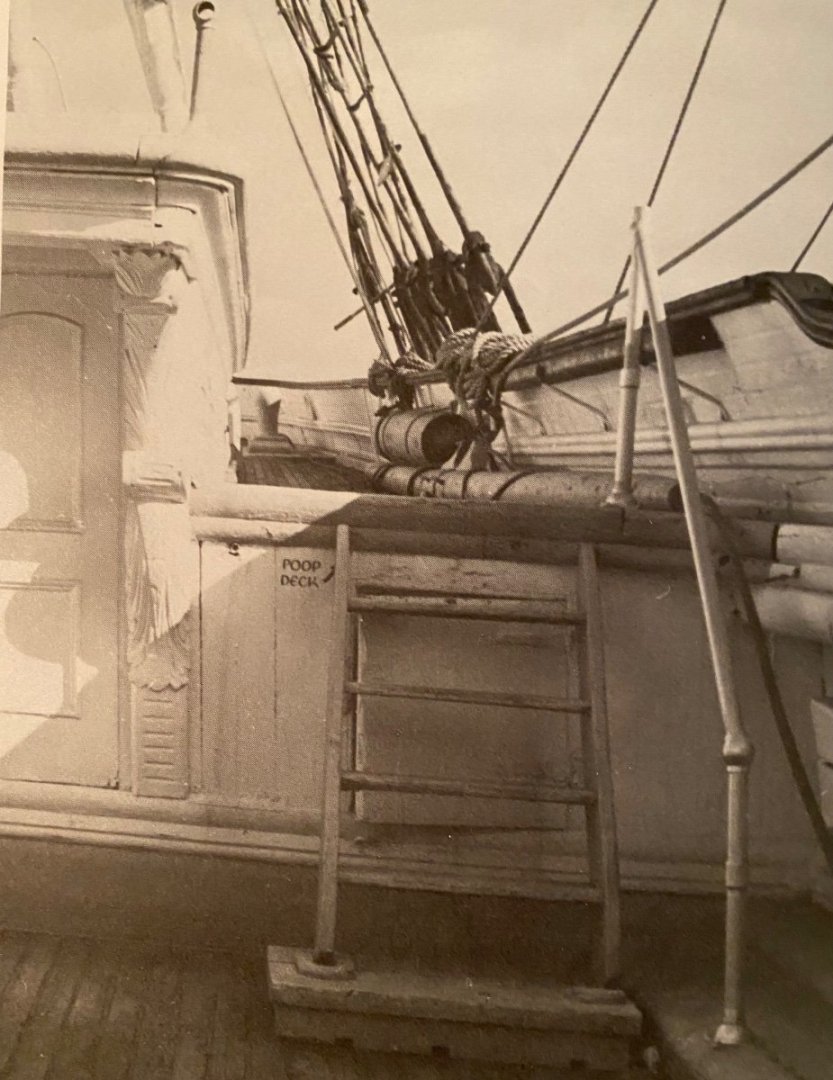
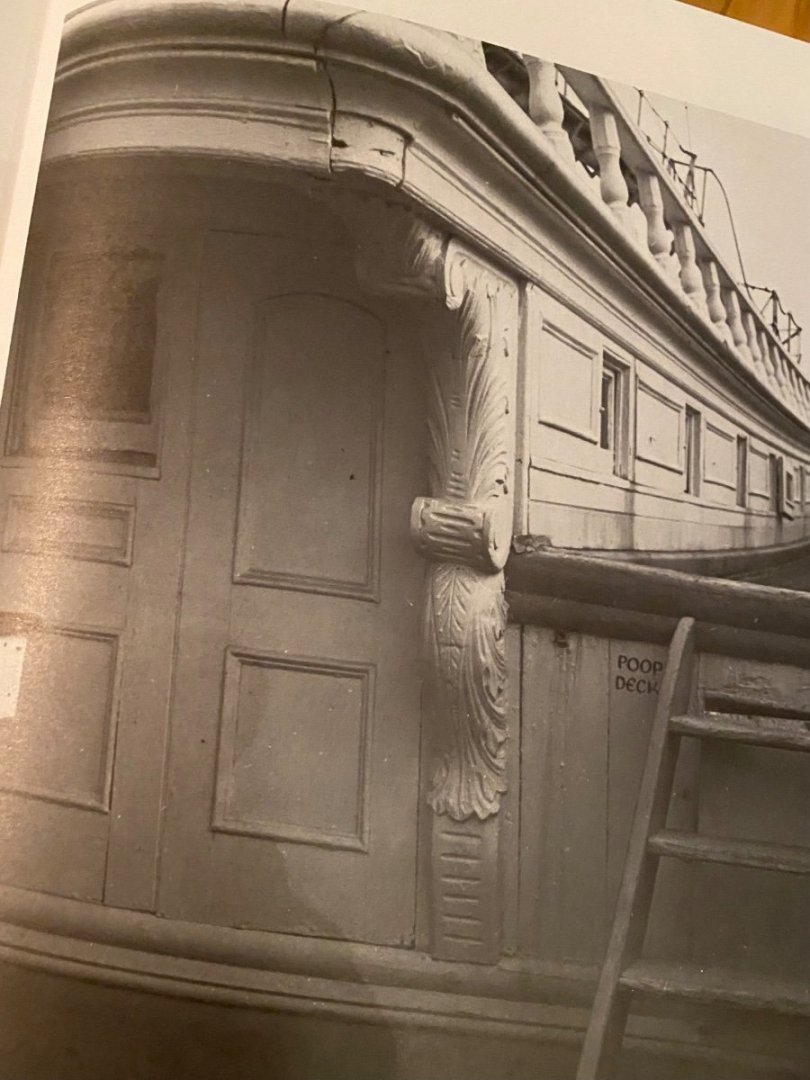
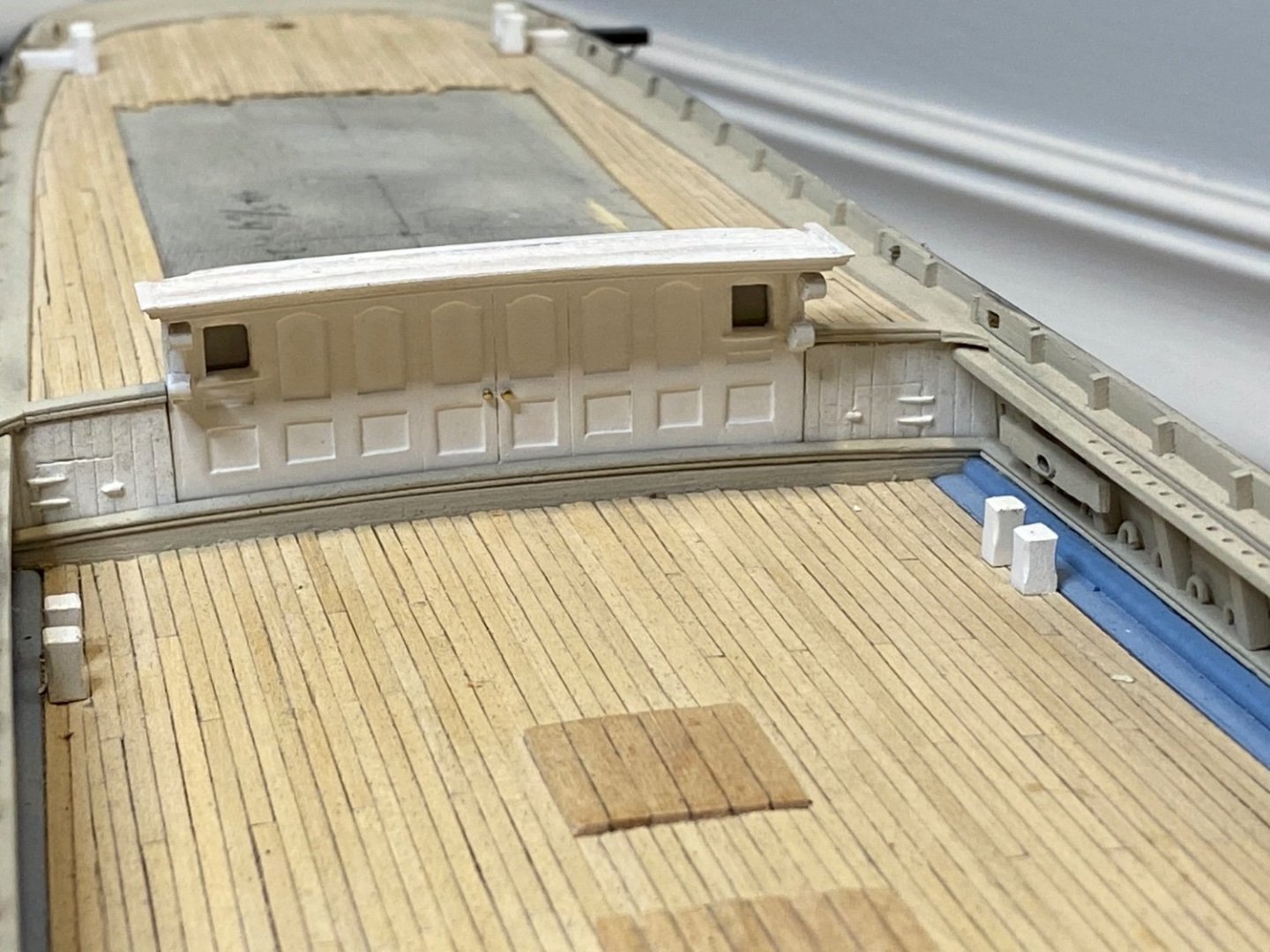
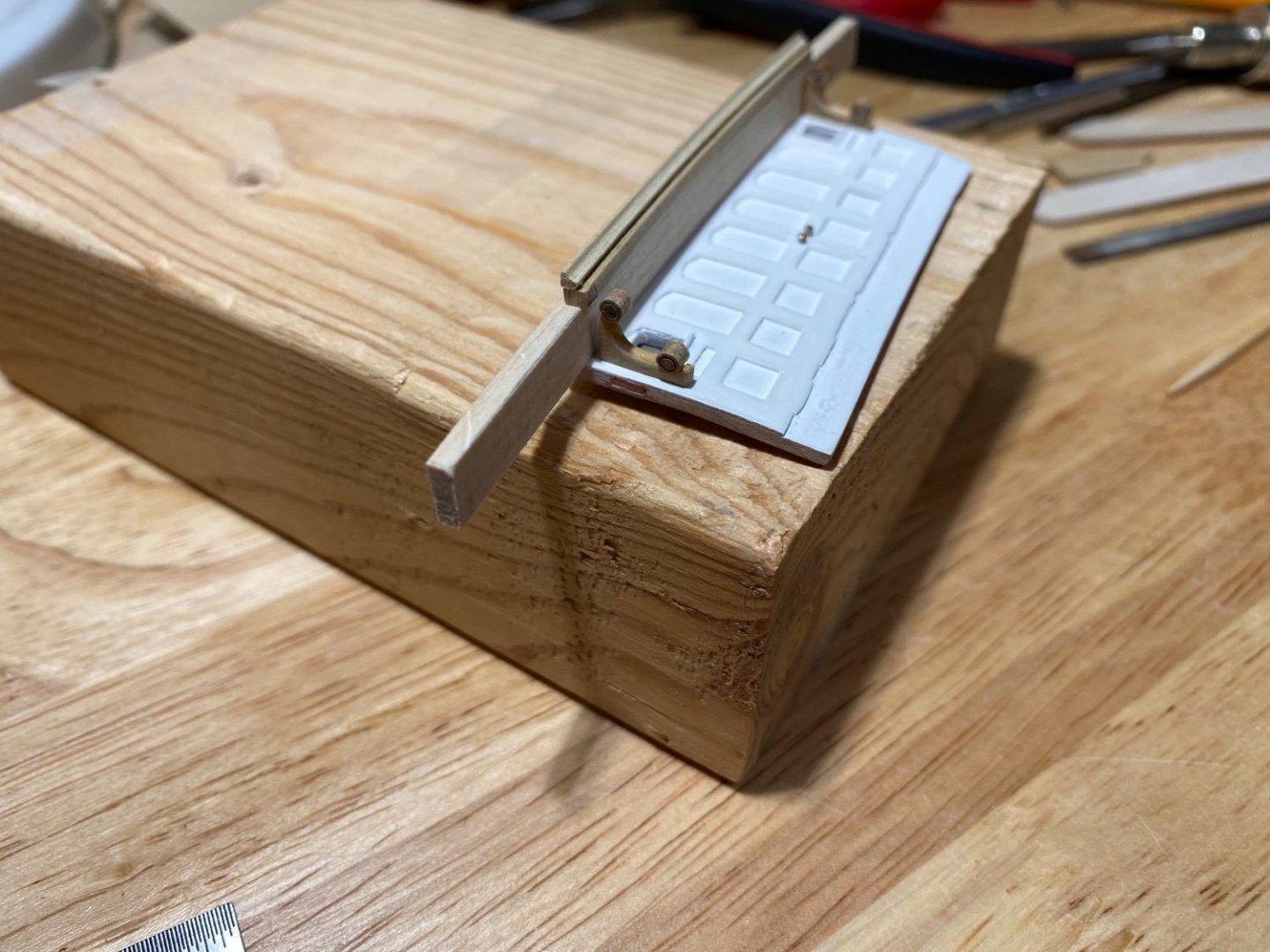
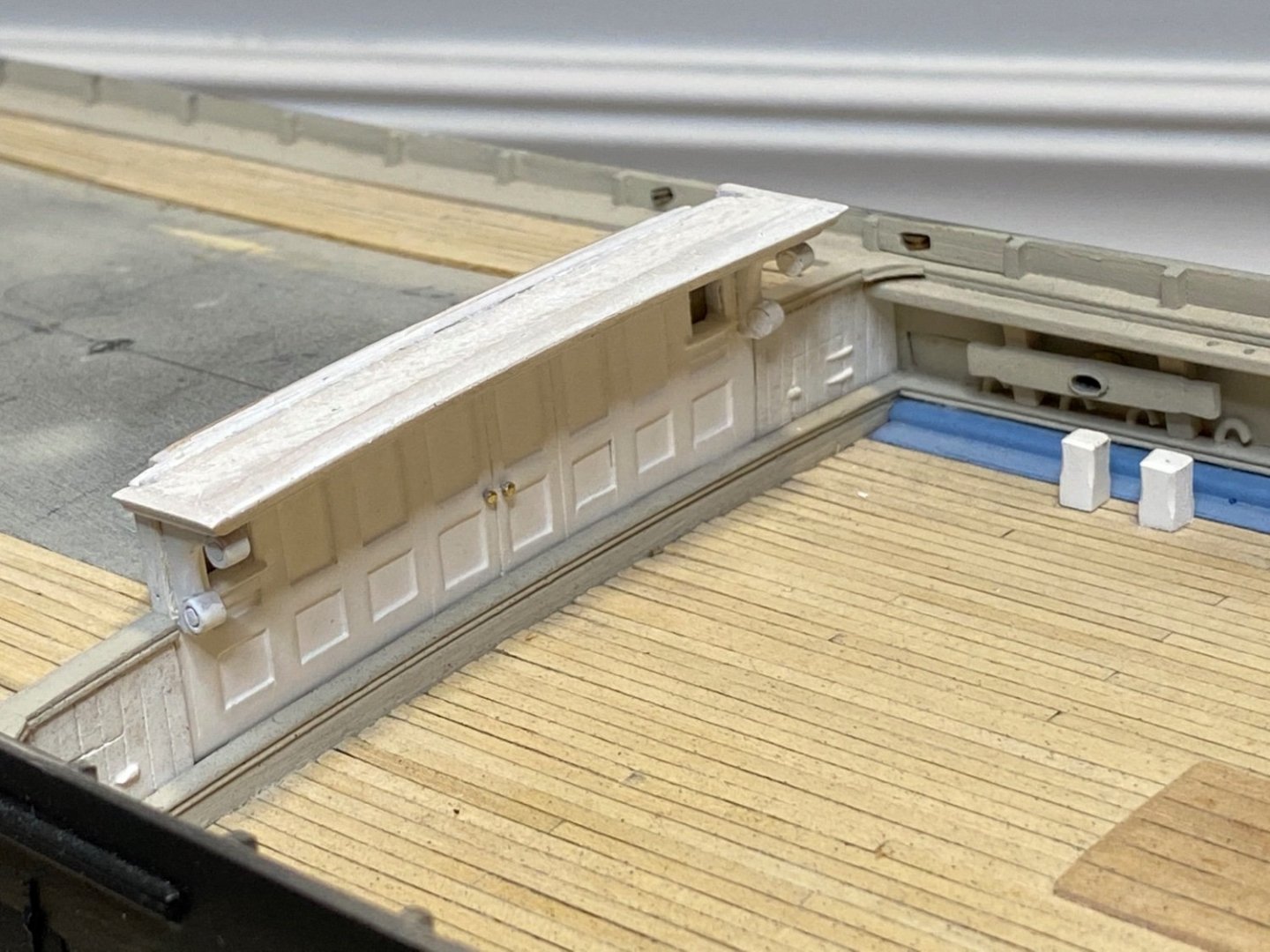
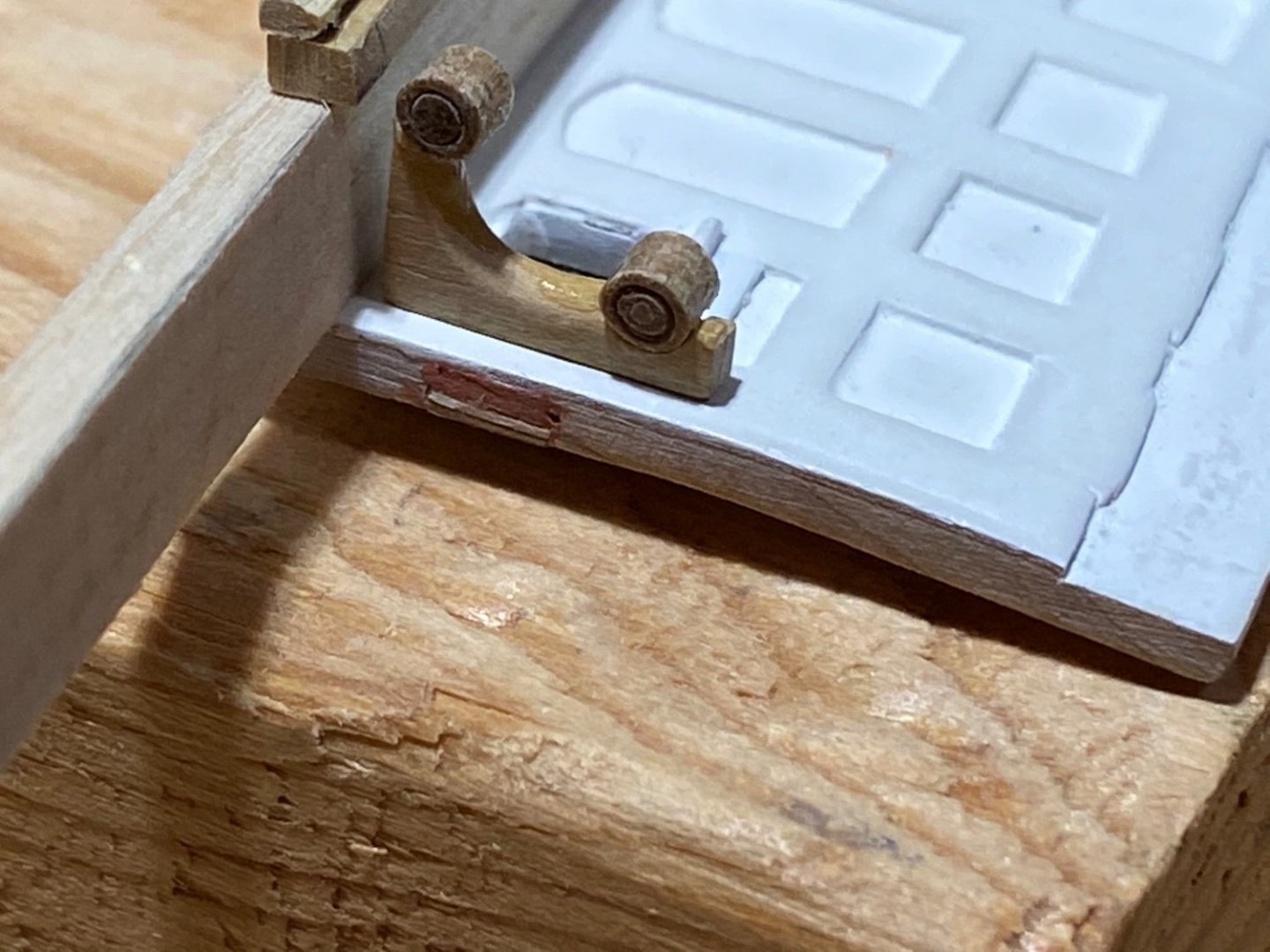
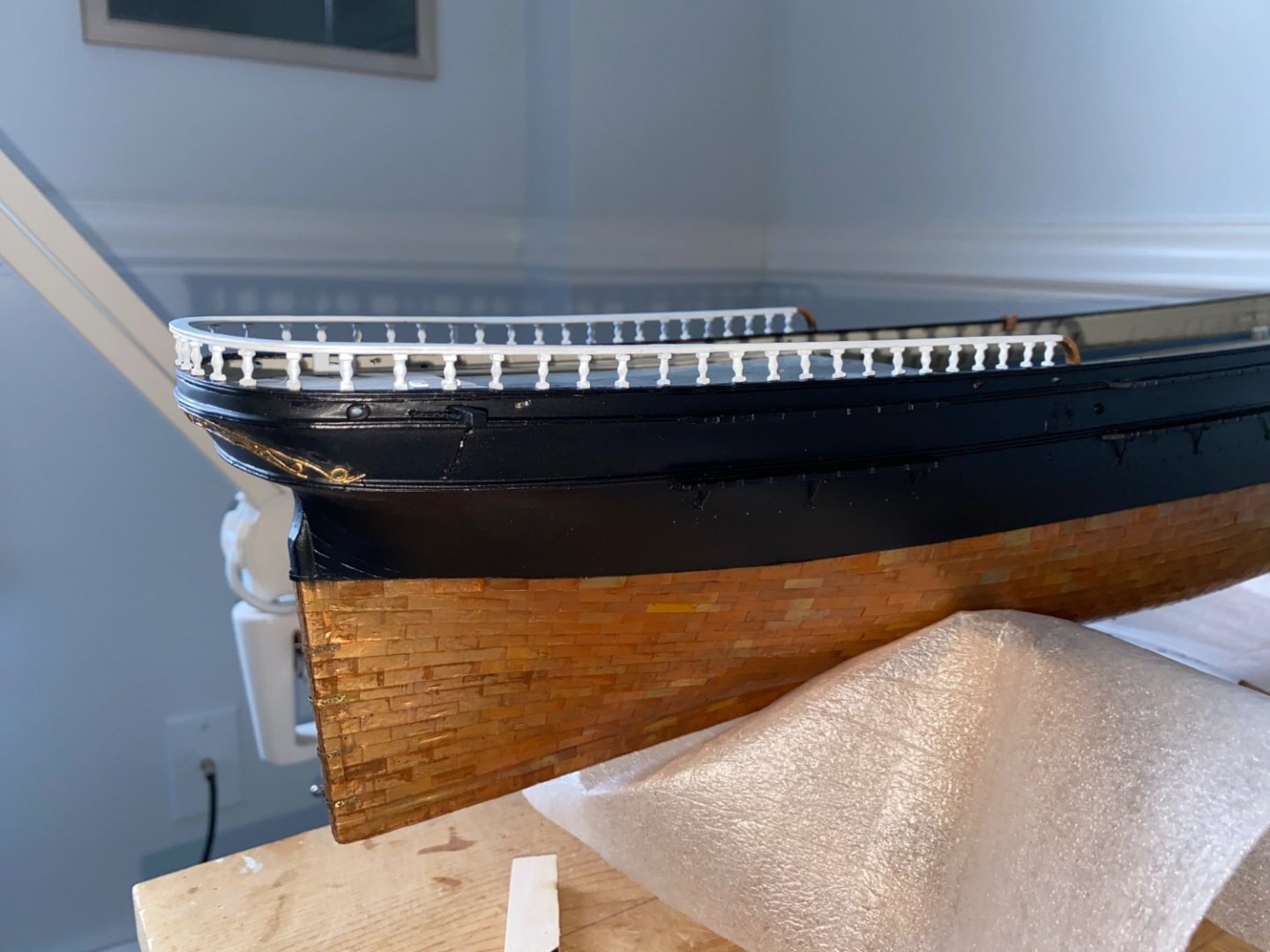
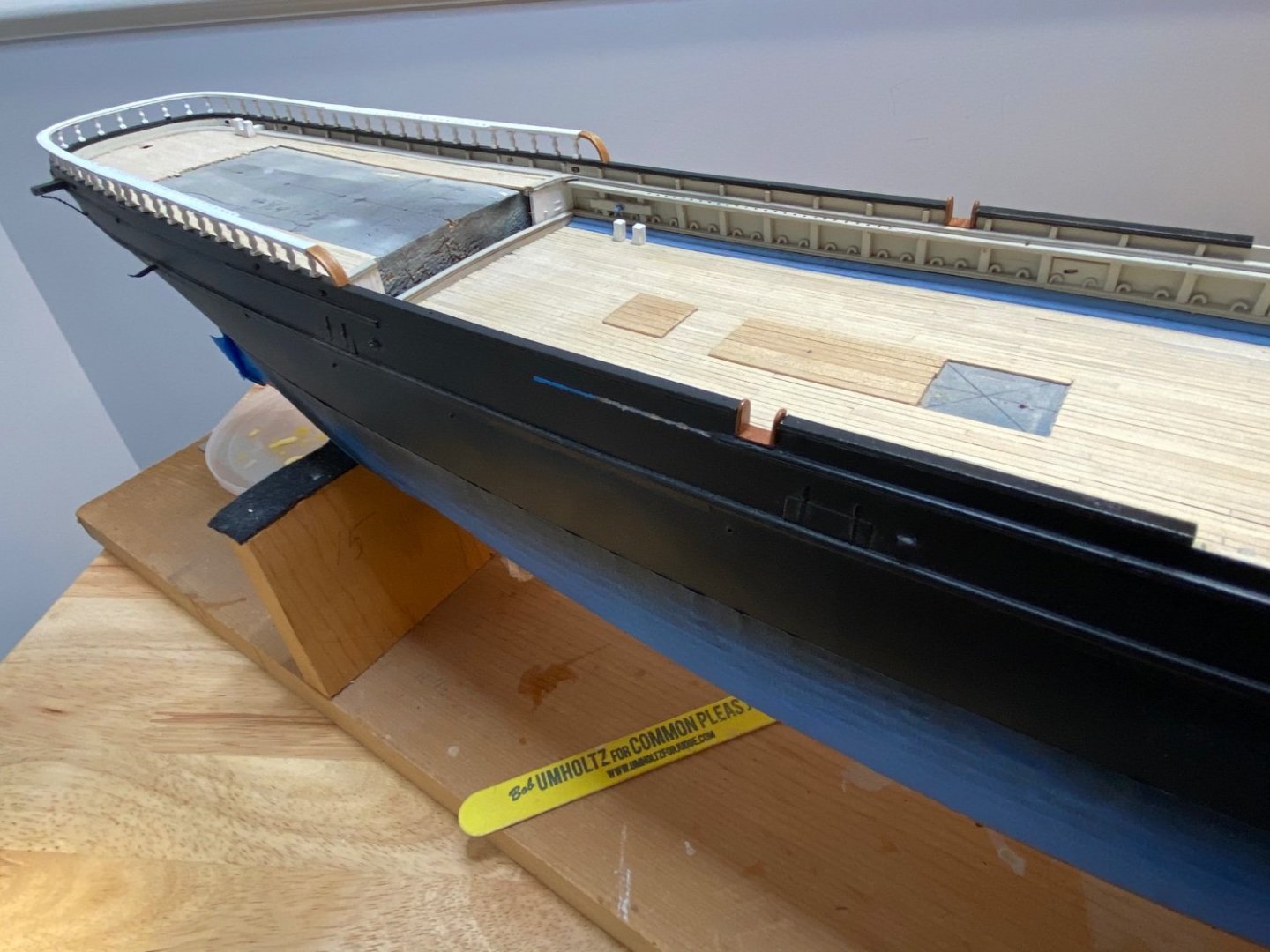
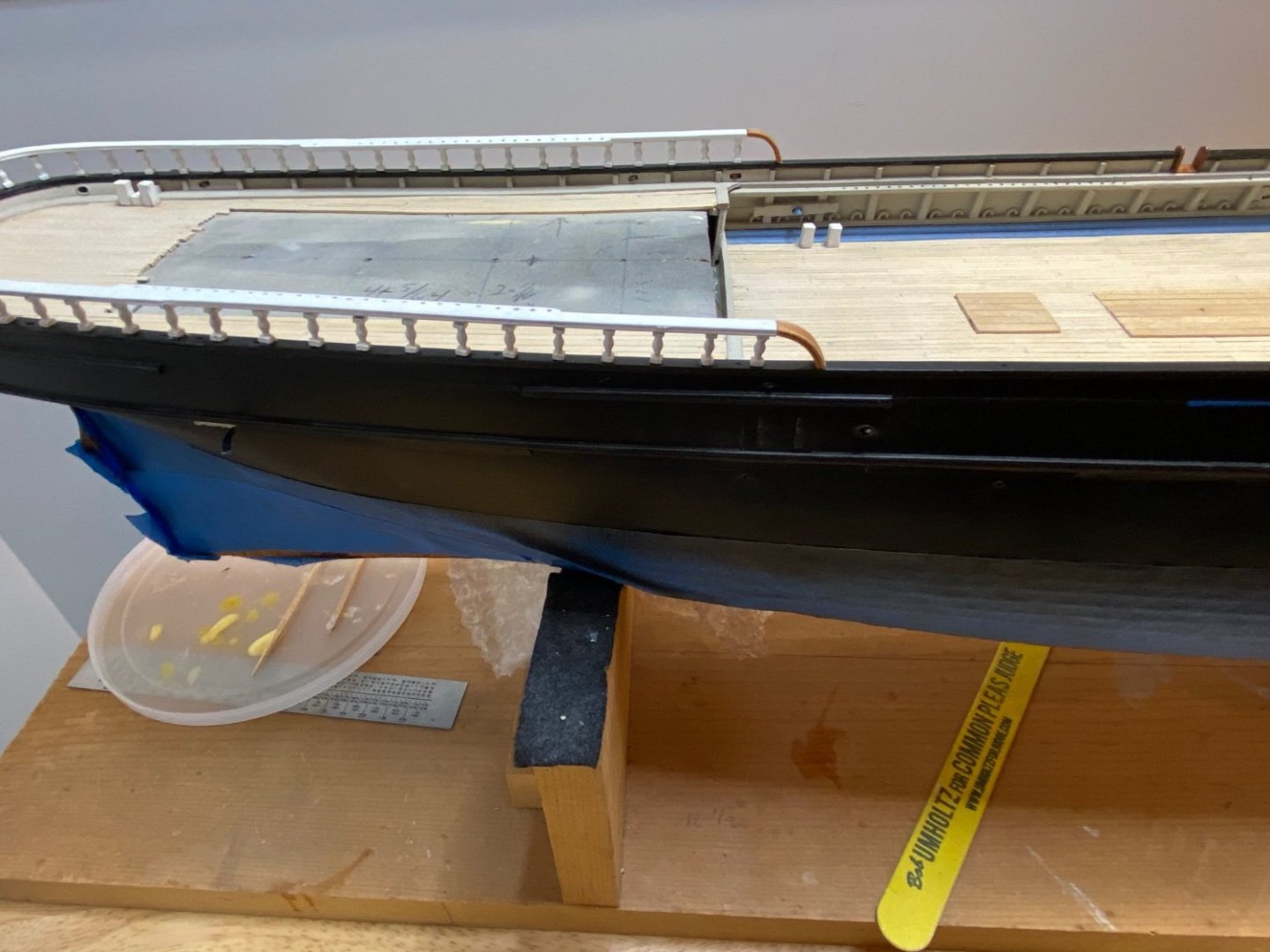
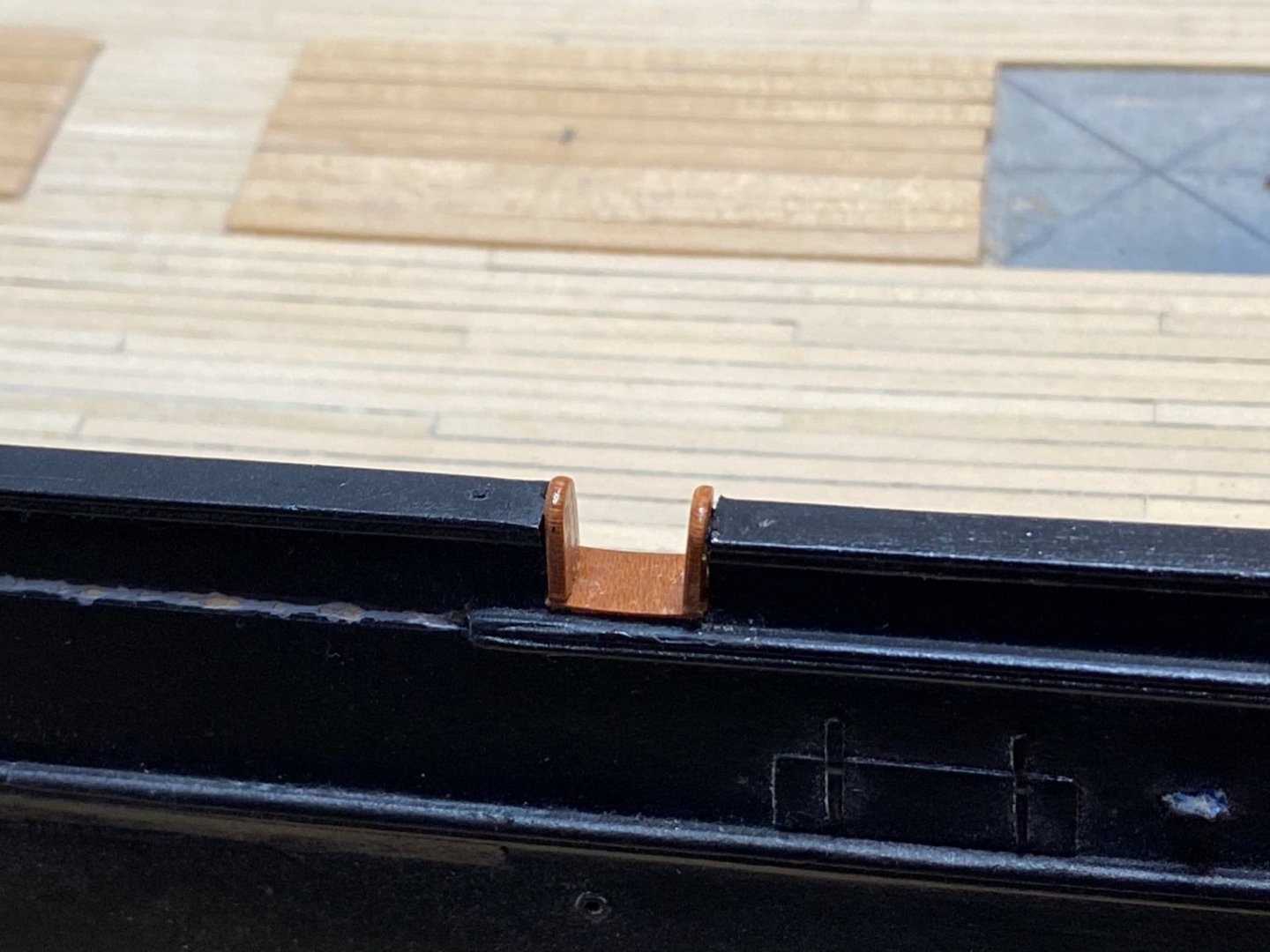
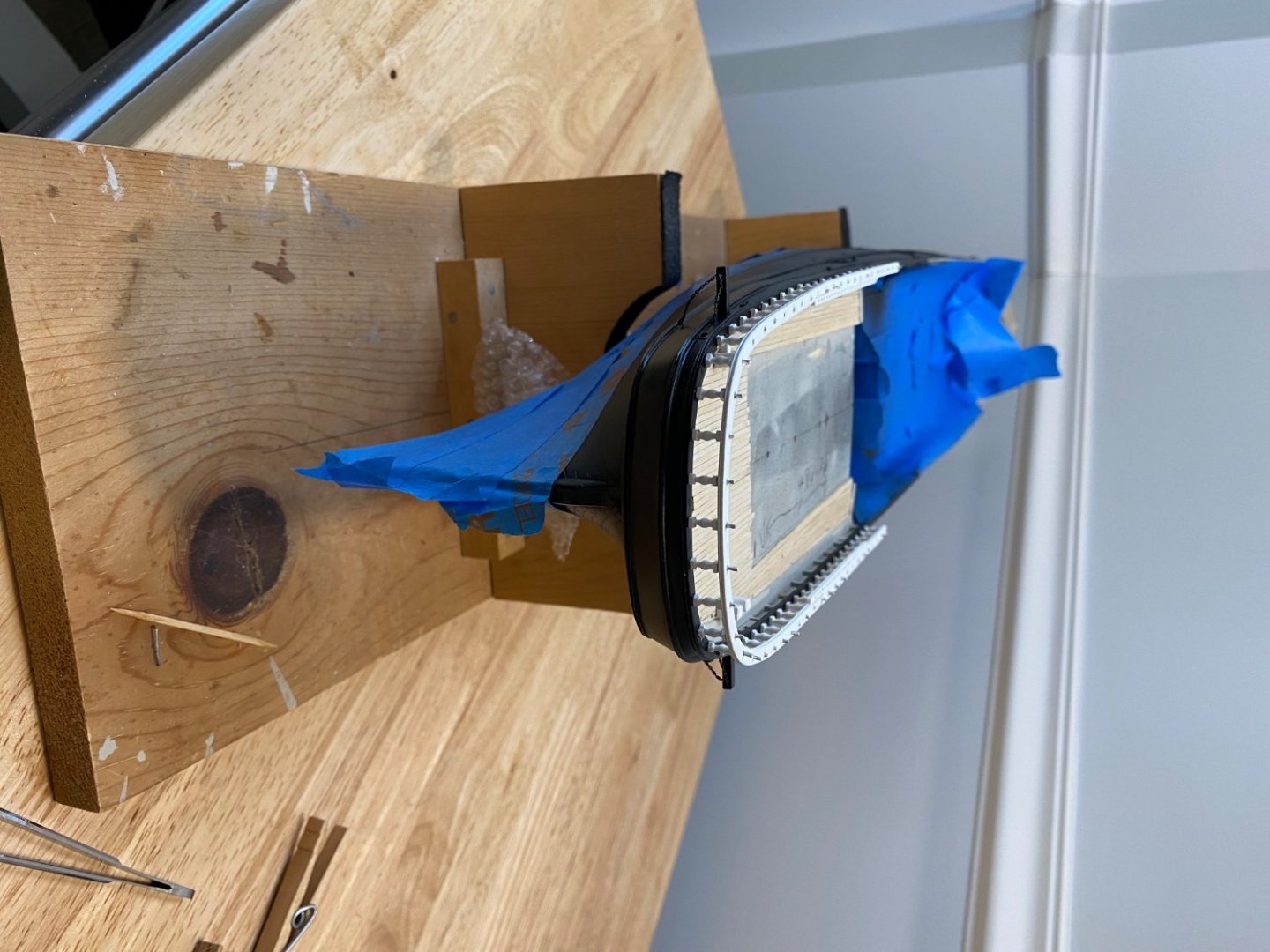
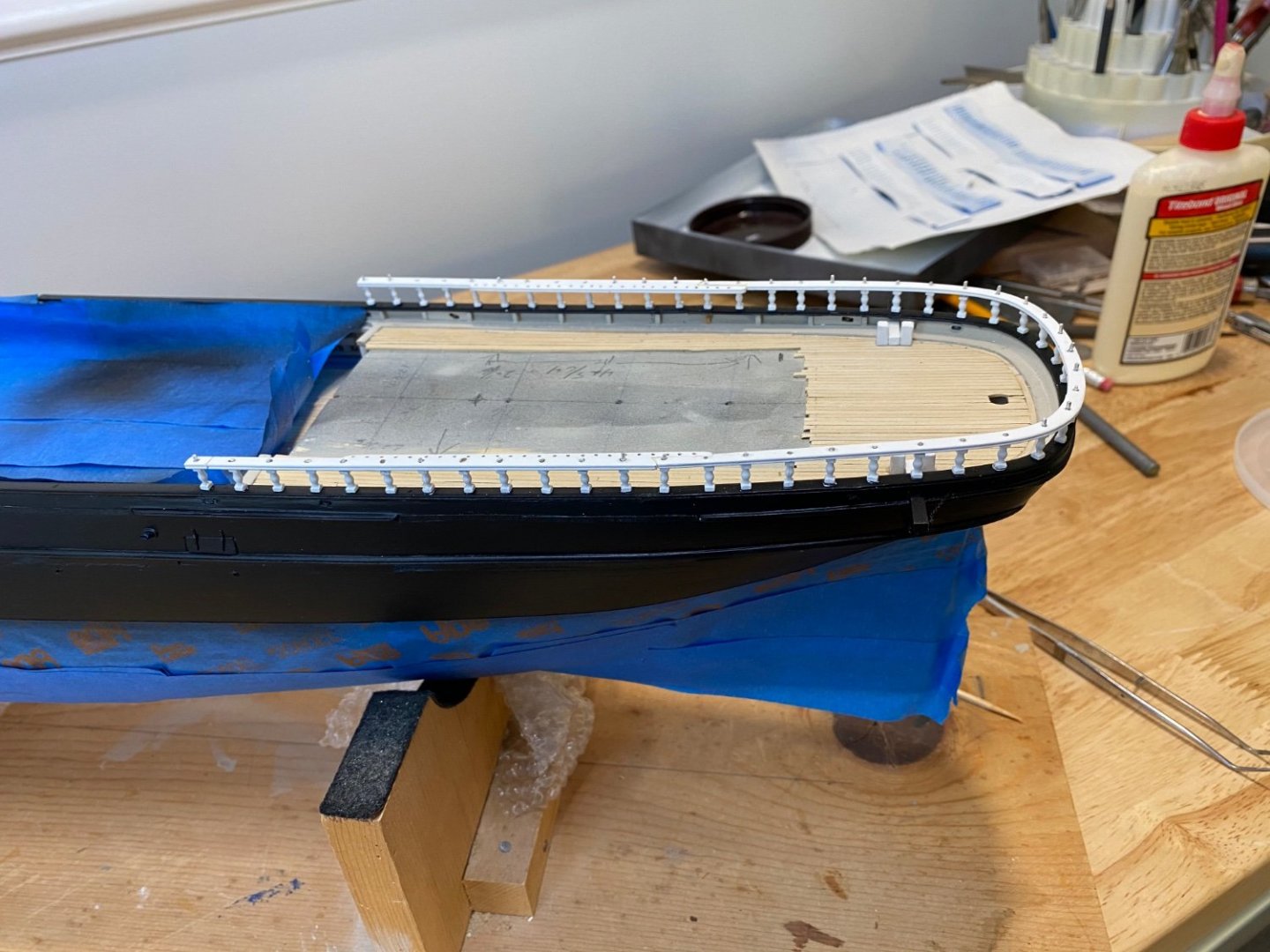
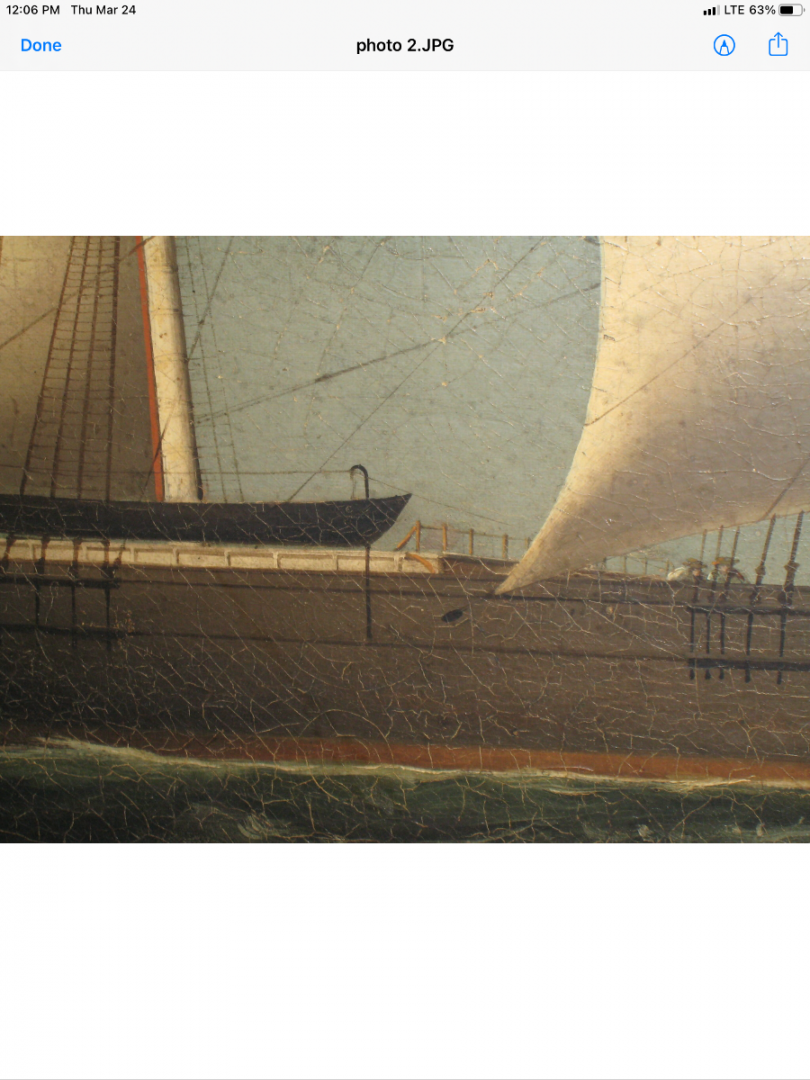
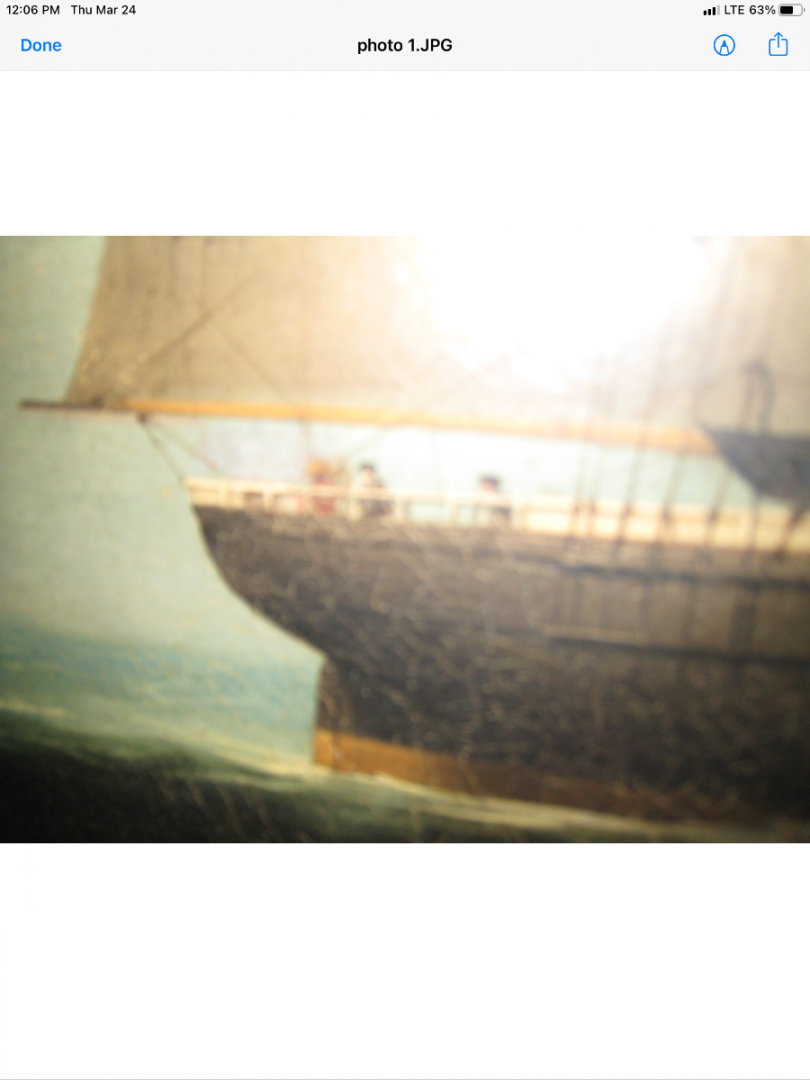
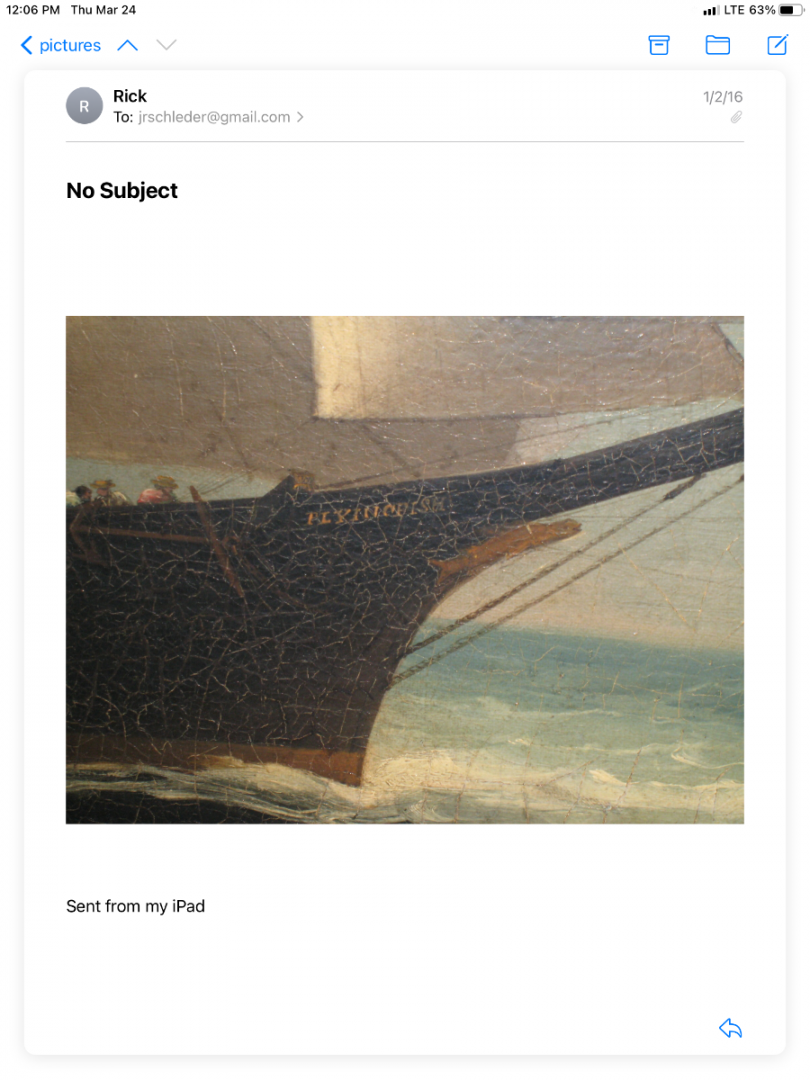
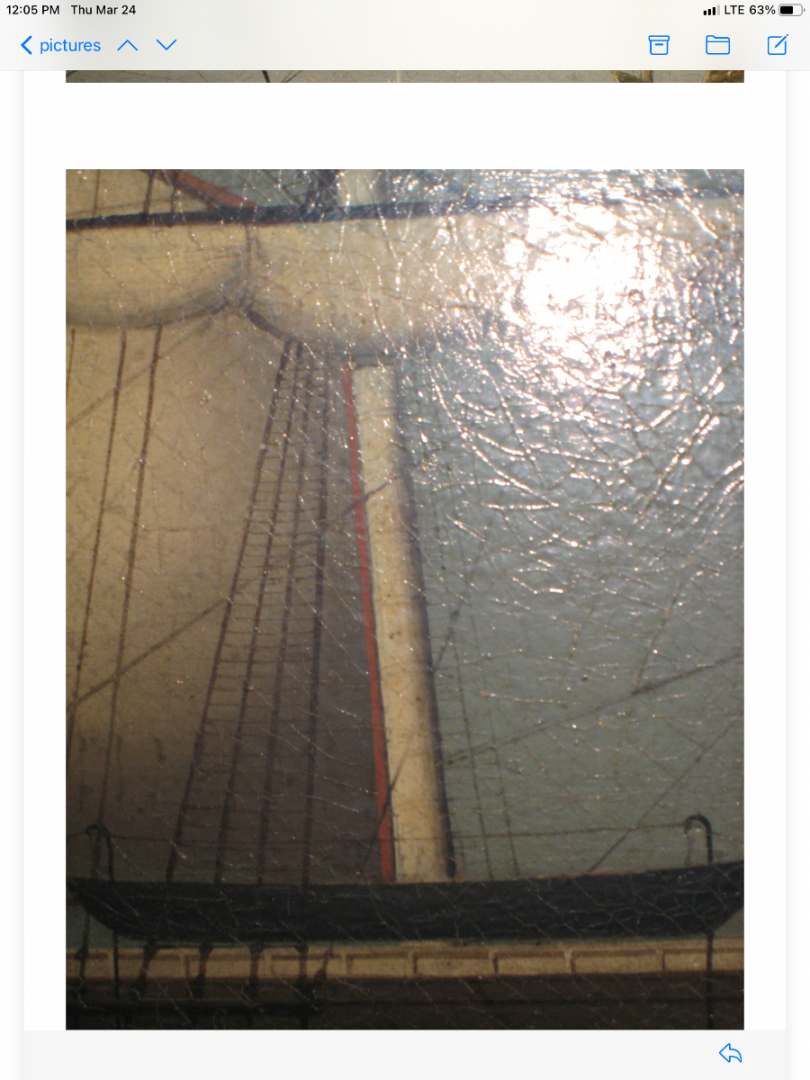
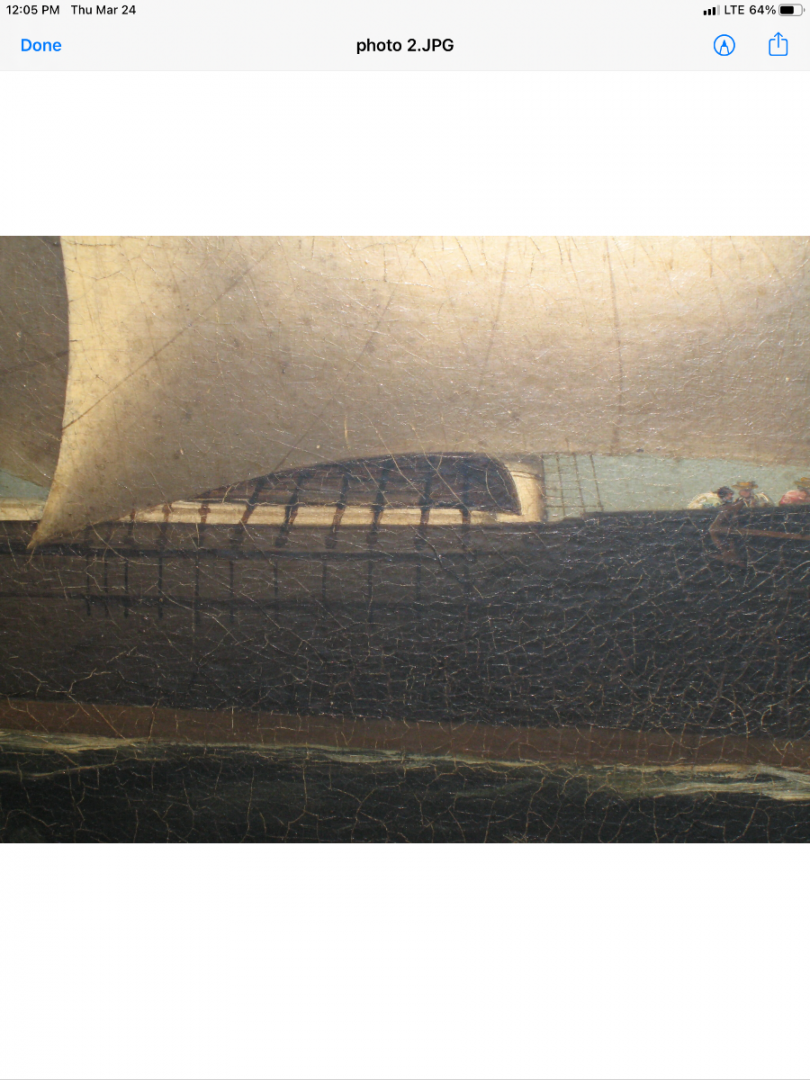
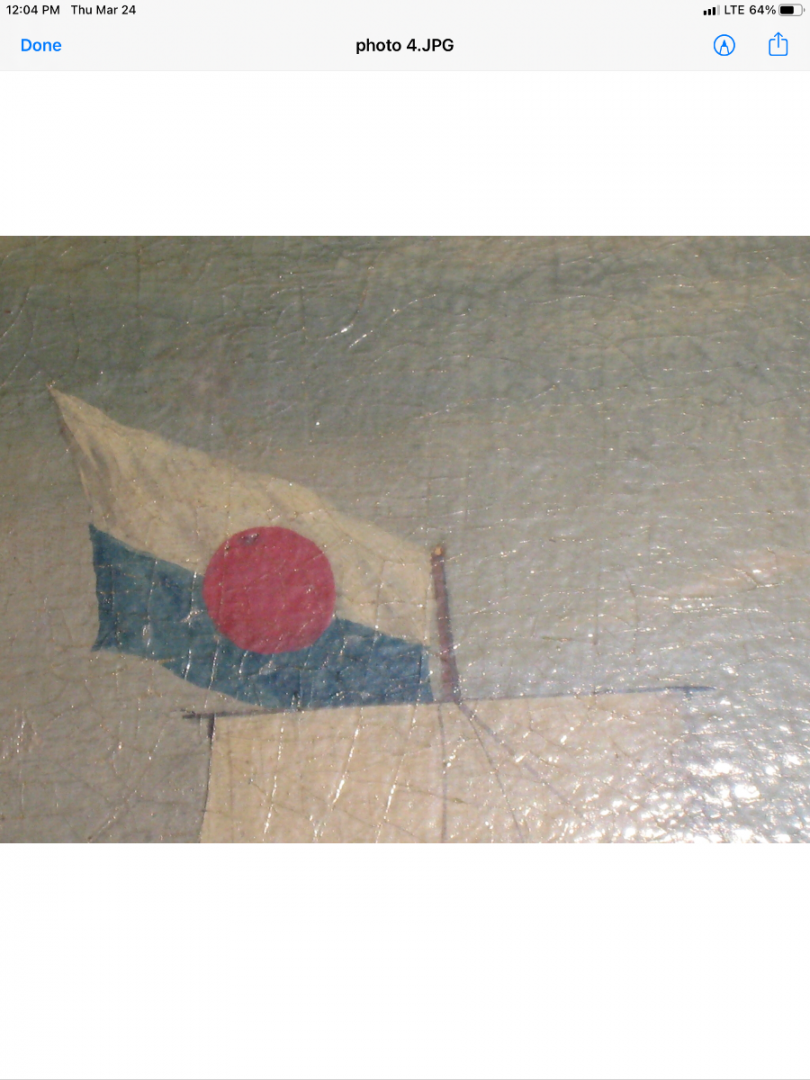
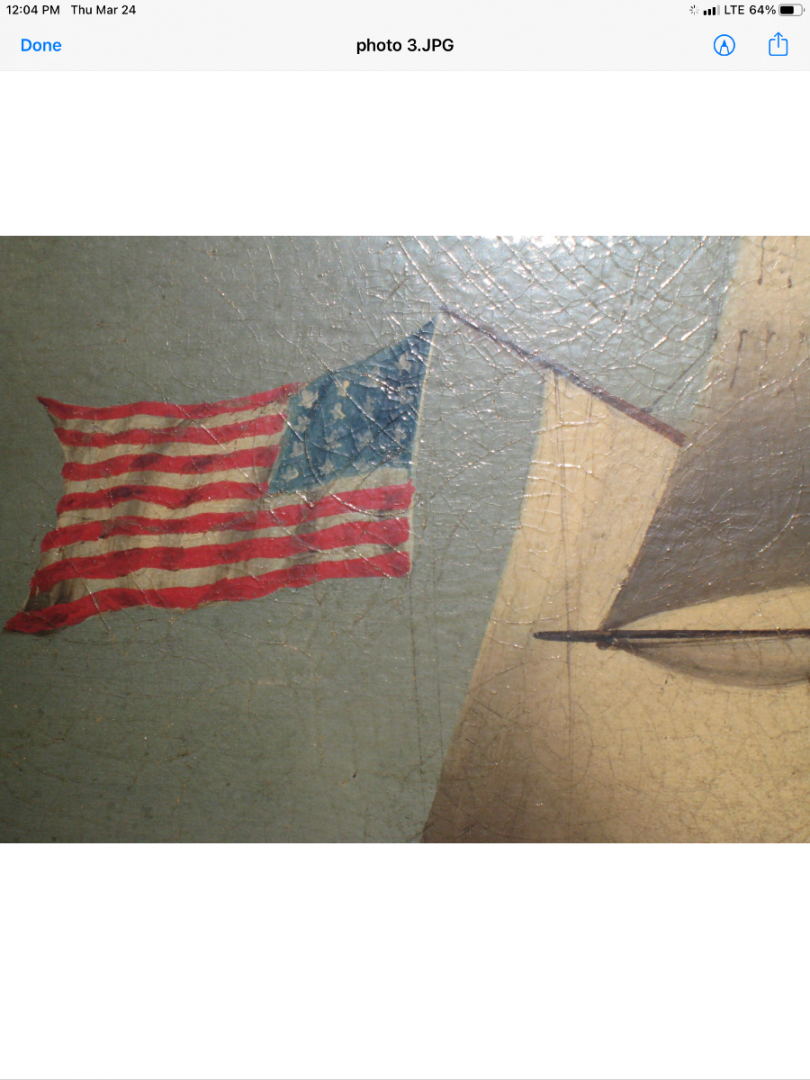
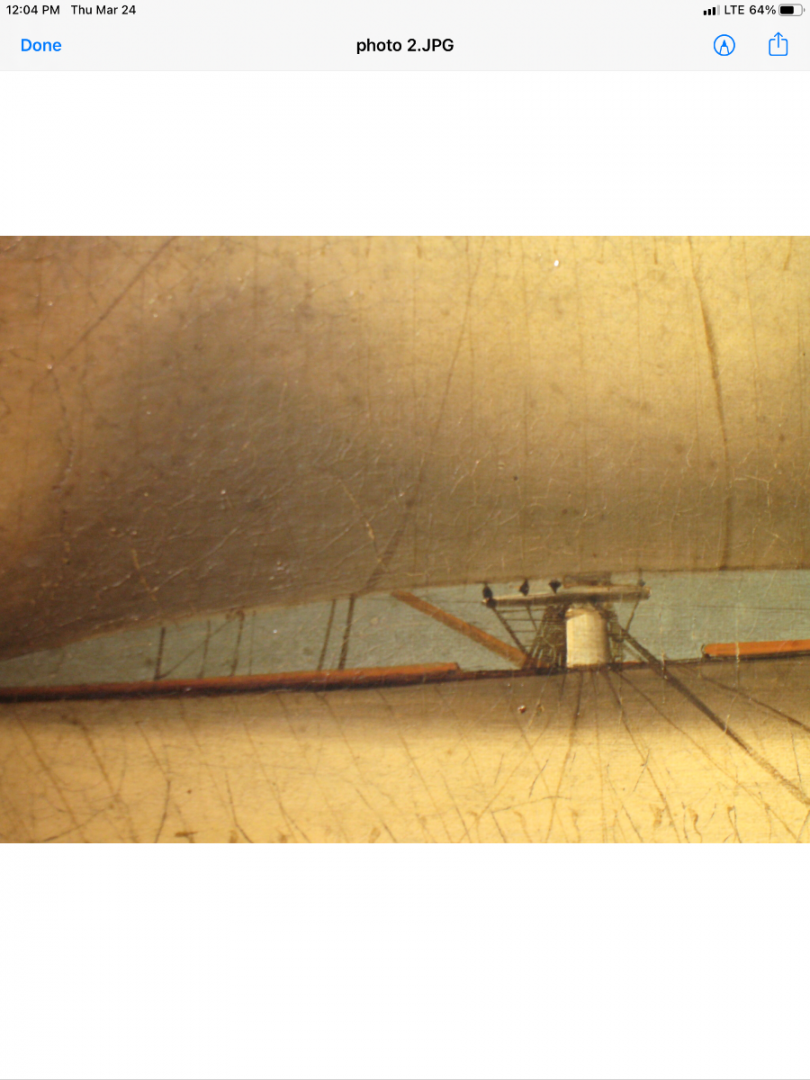
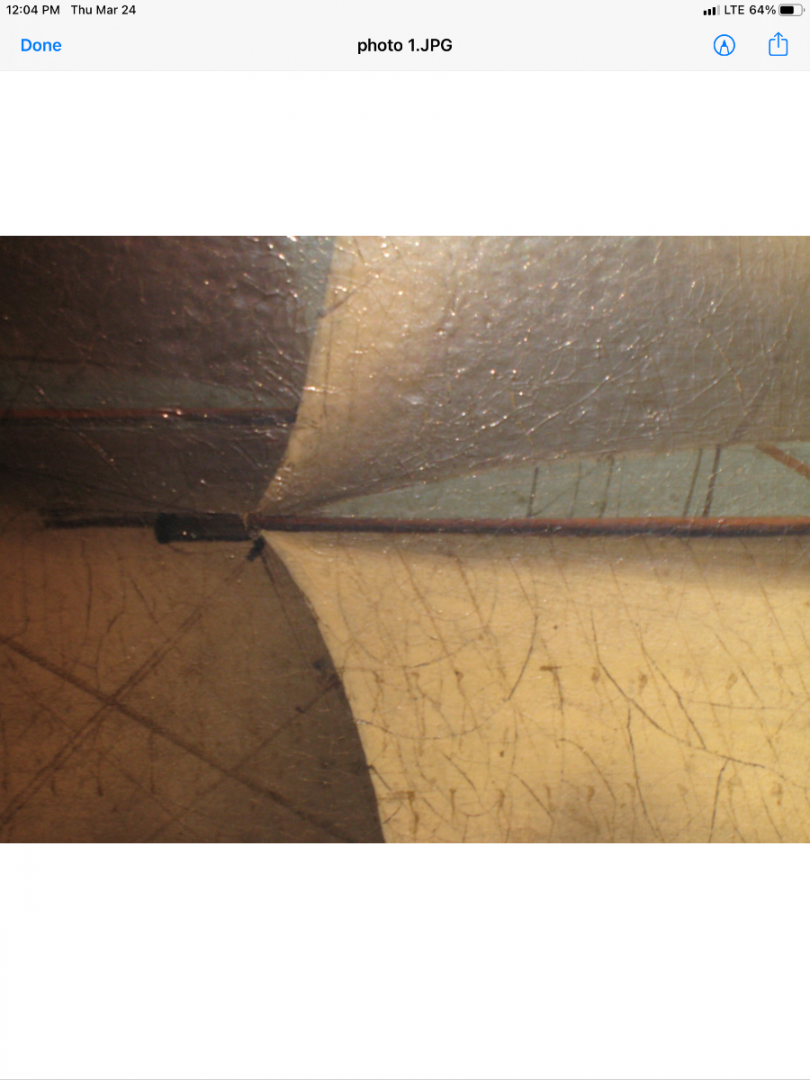
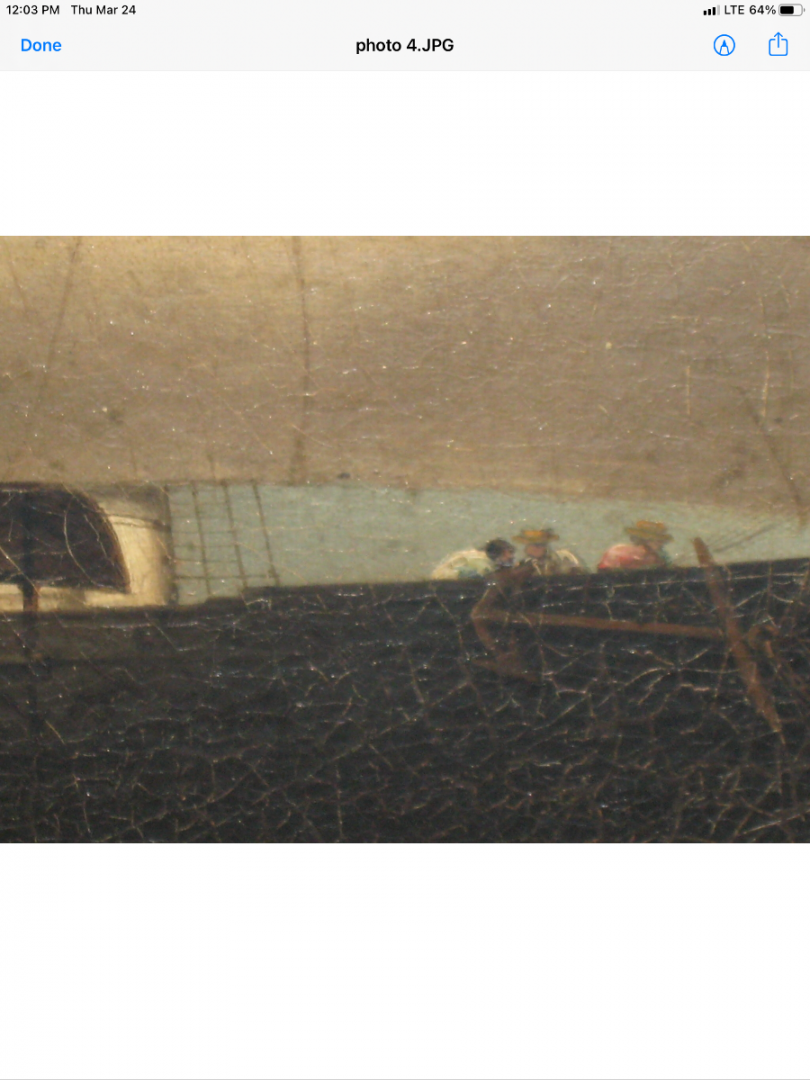
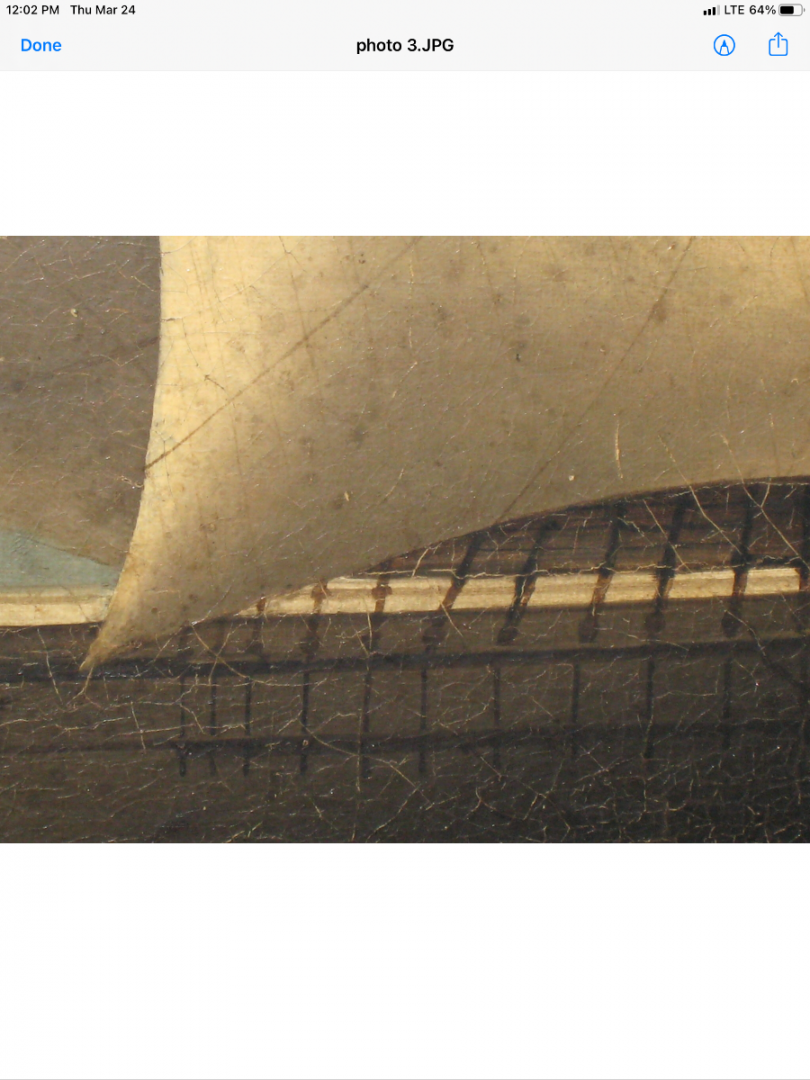
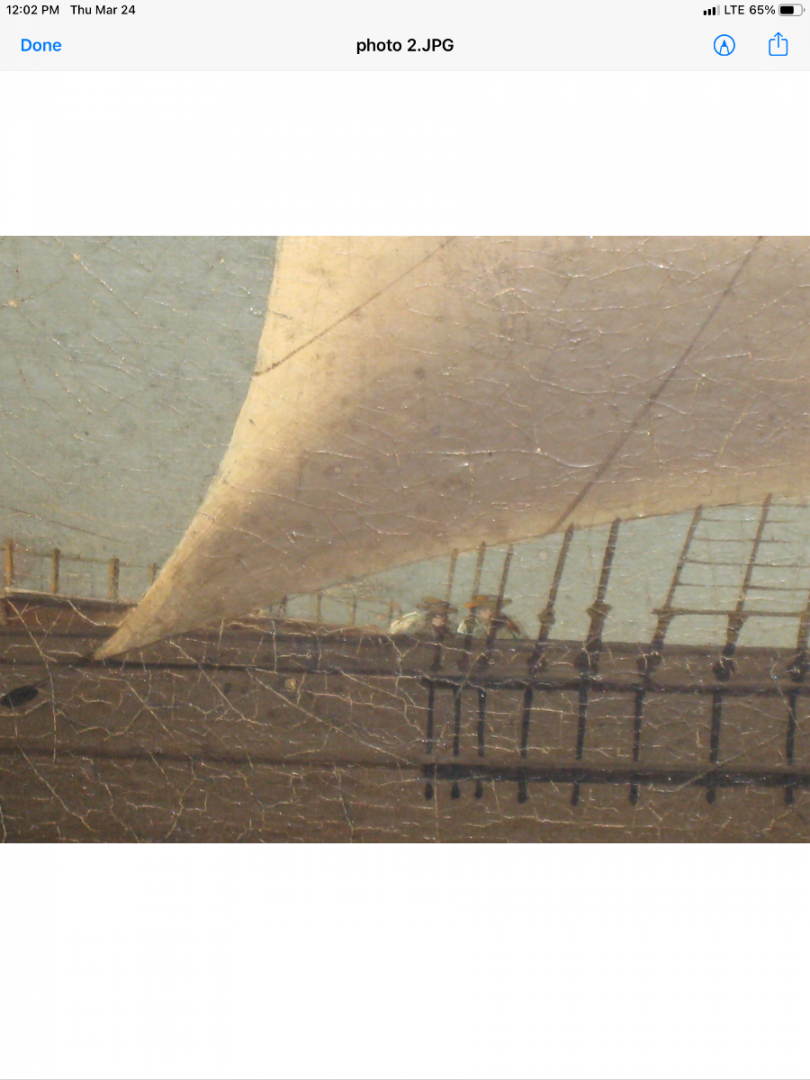
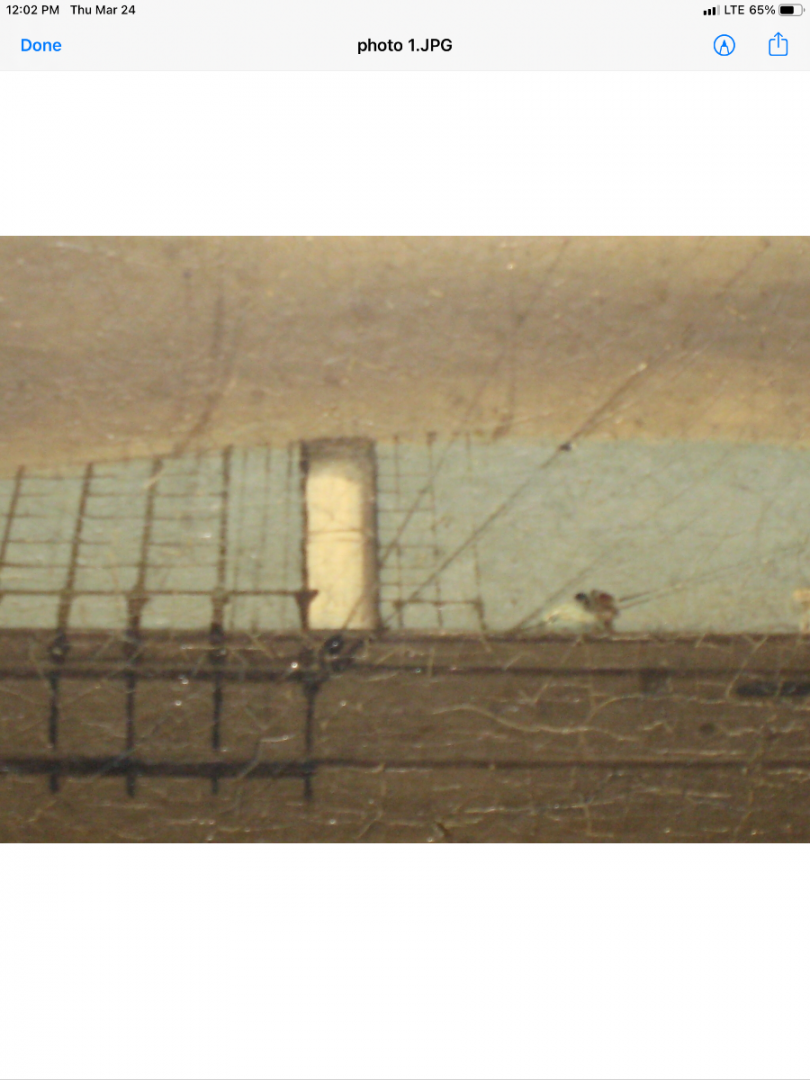
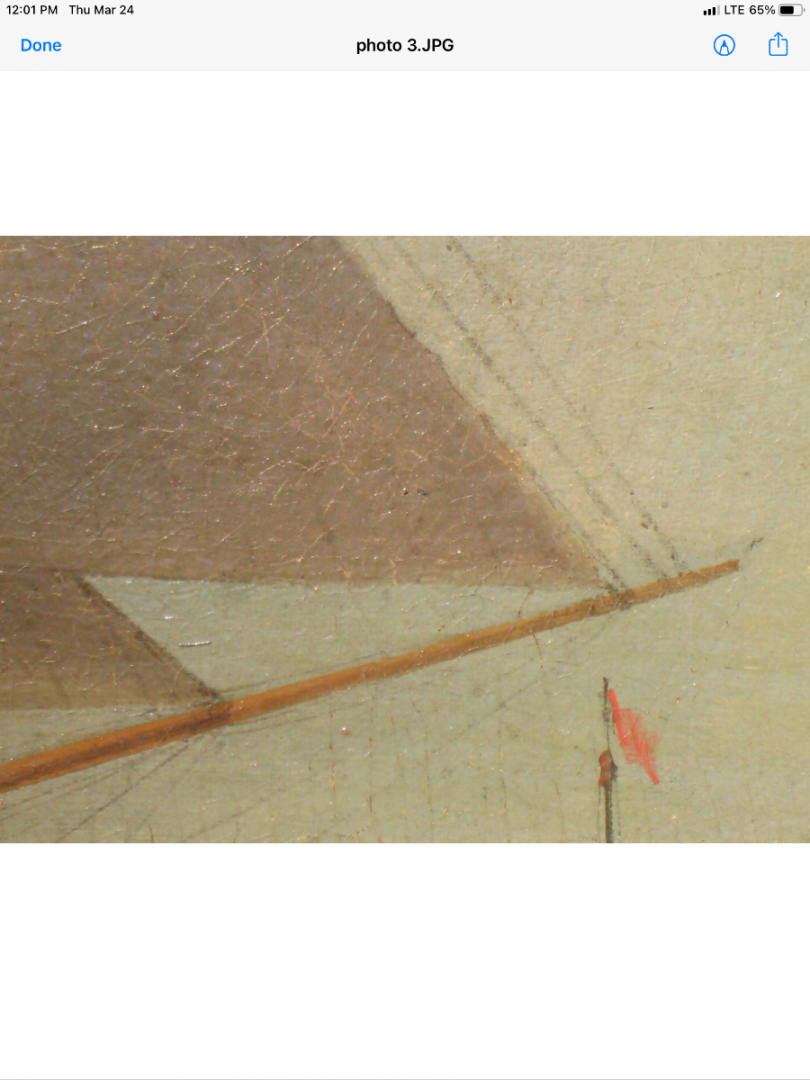
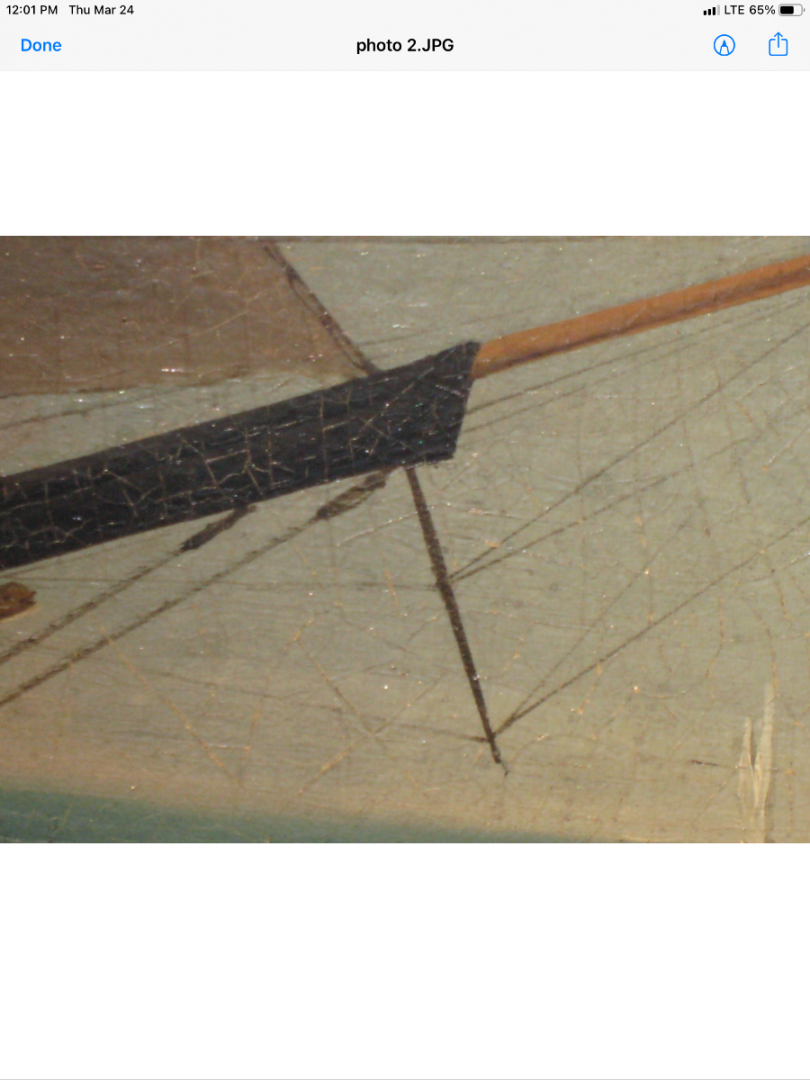
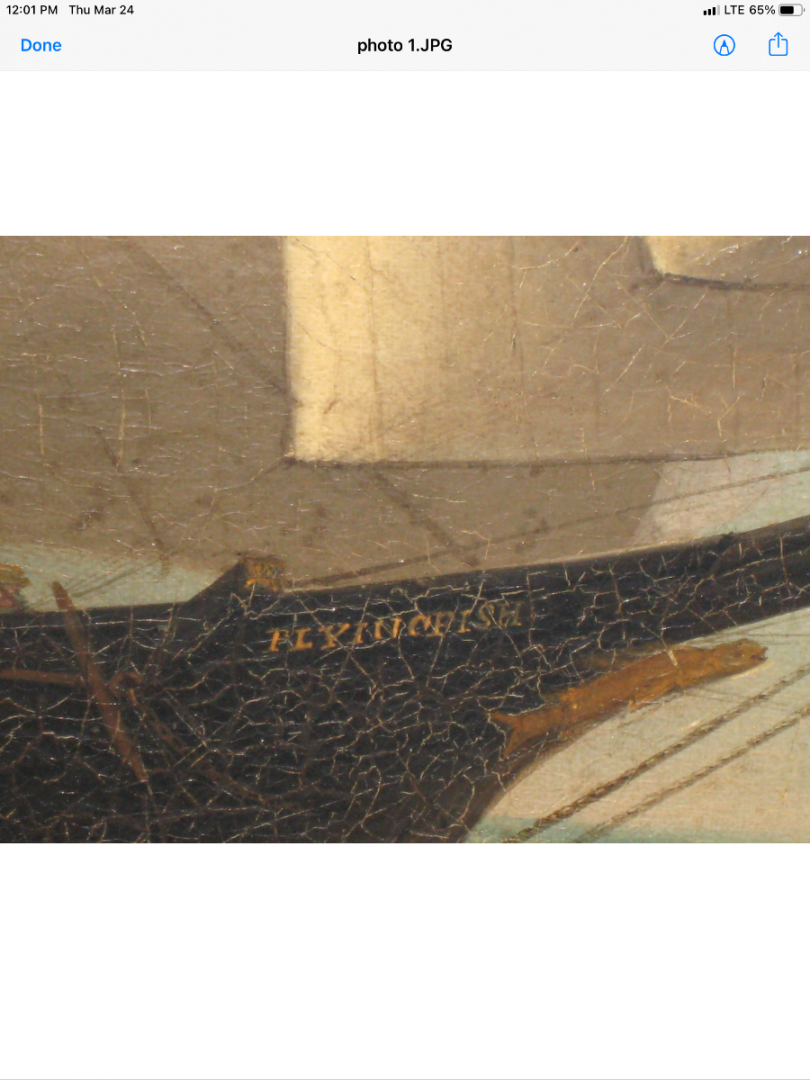
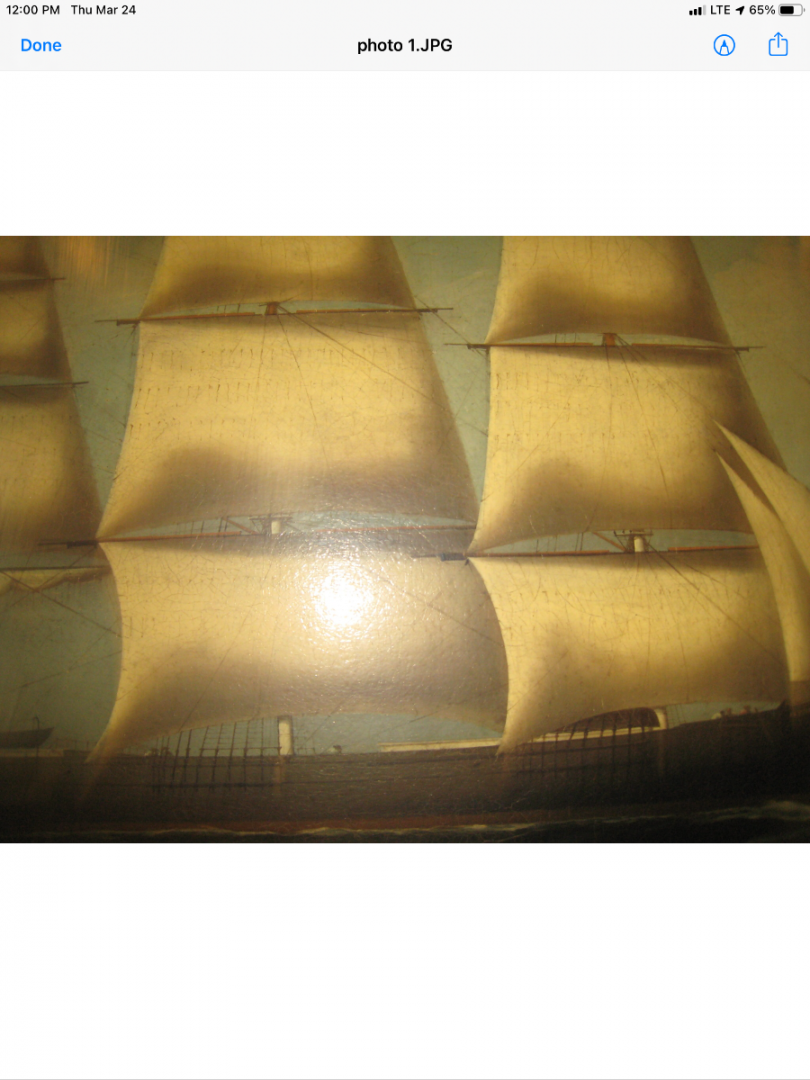
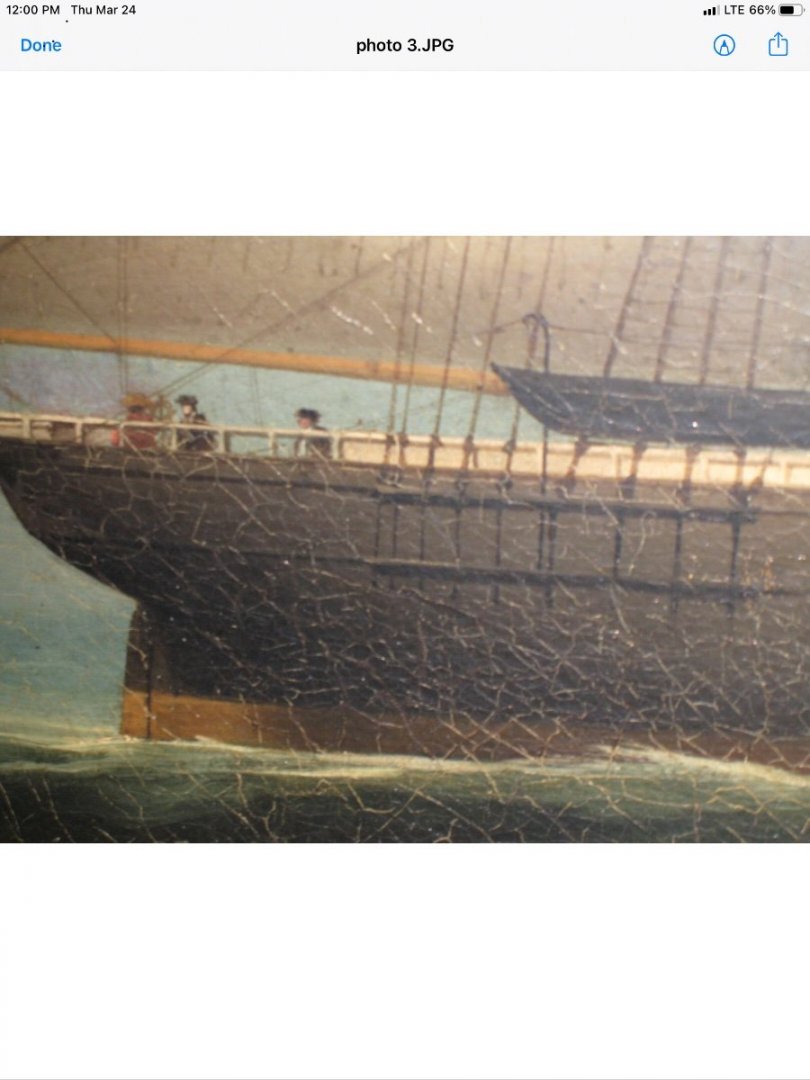
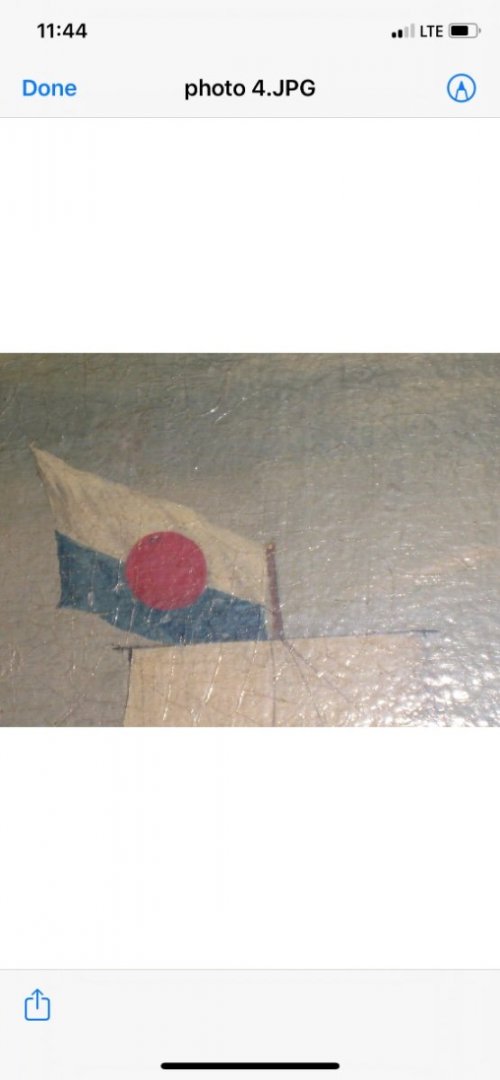
Flying Fish by Rick310 - Model Shipways - 1/96
in - Kit build logs for subjects built from 1851 - 1900
Posted
Wonderful painting and I really like your sketches of the stern board, stem and figureheads. Your talent is amazing and I believe, very accurate.